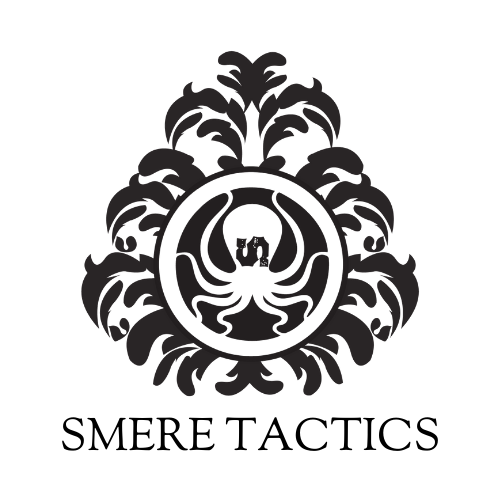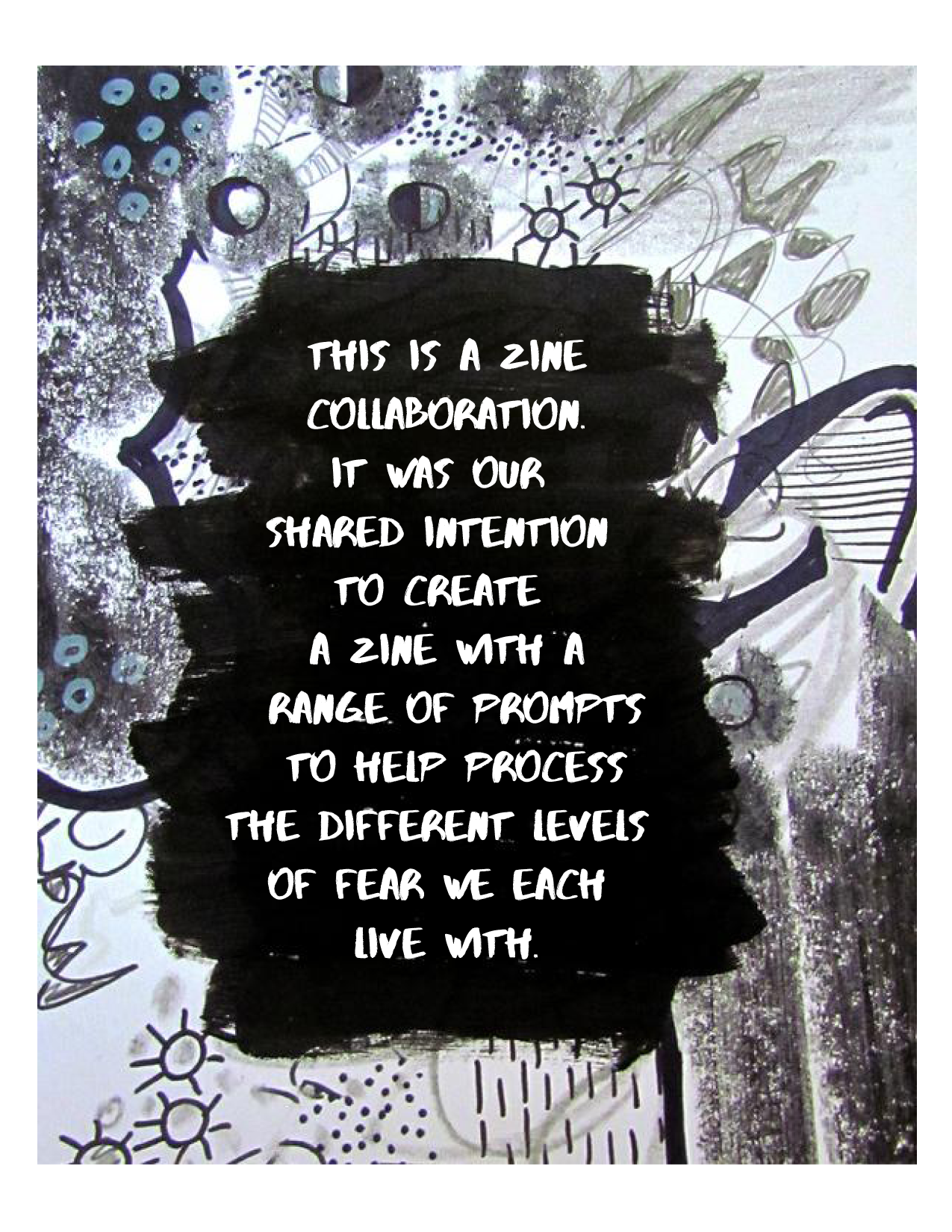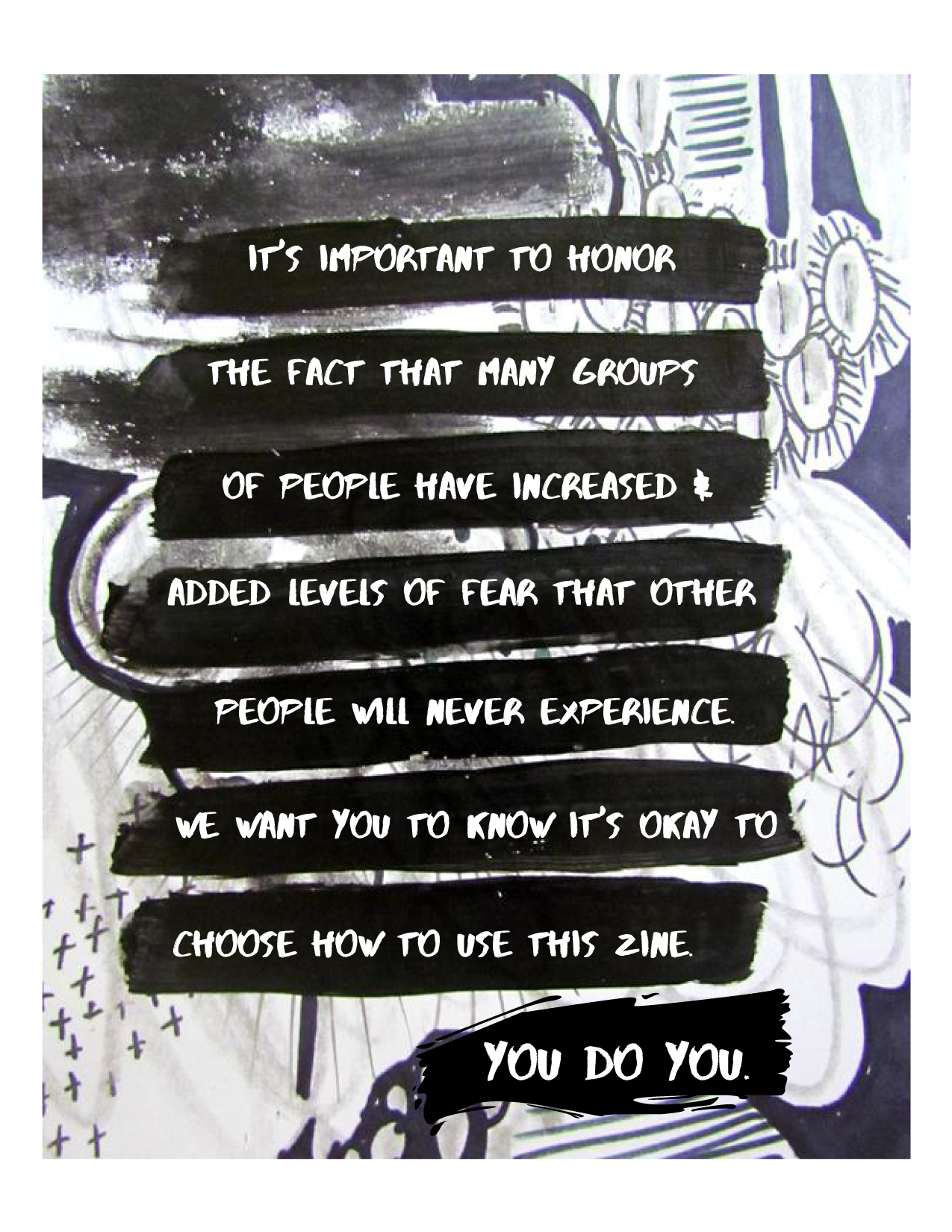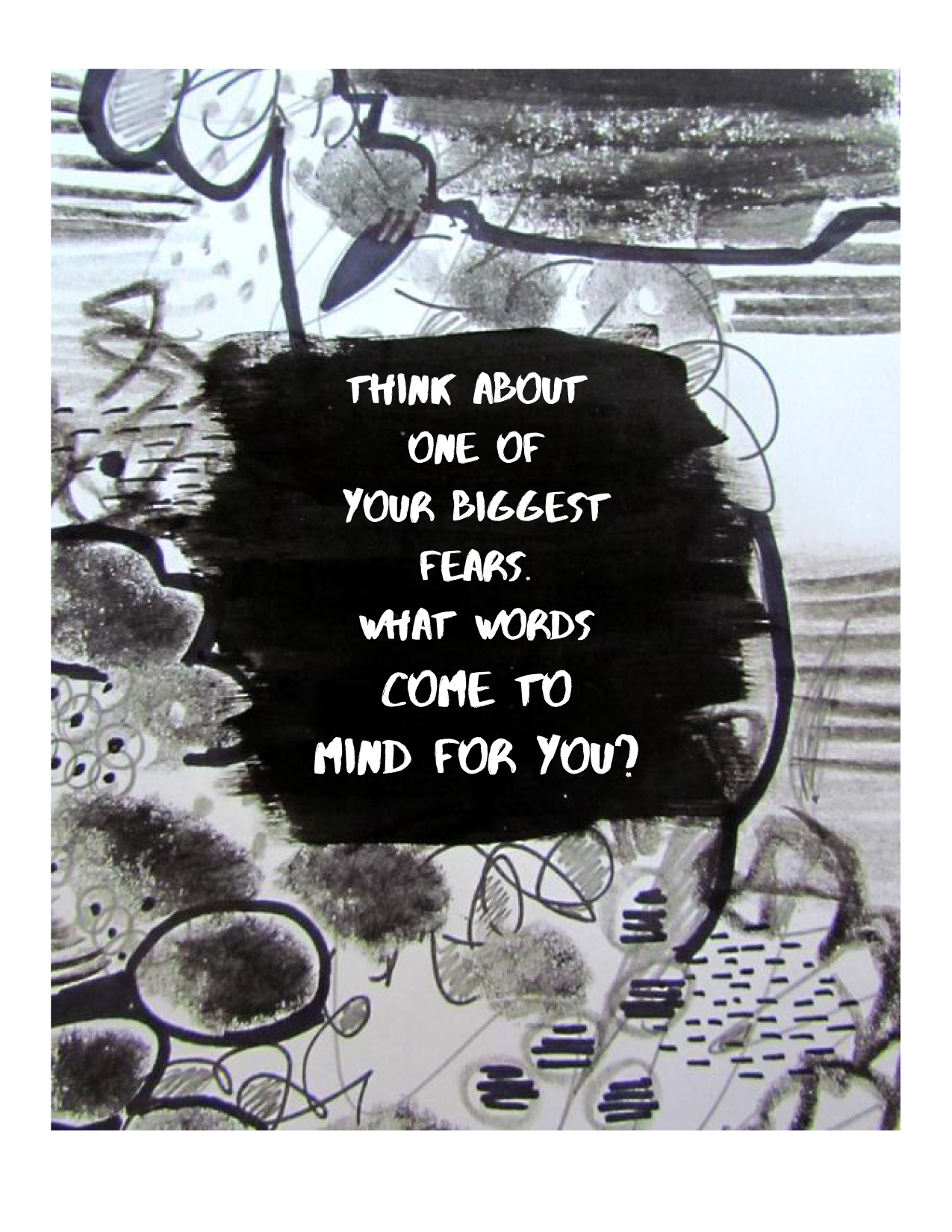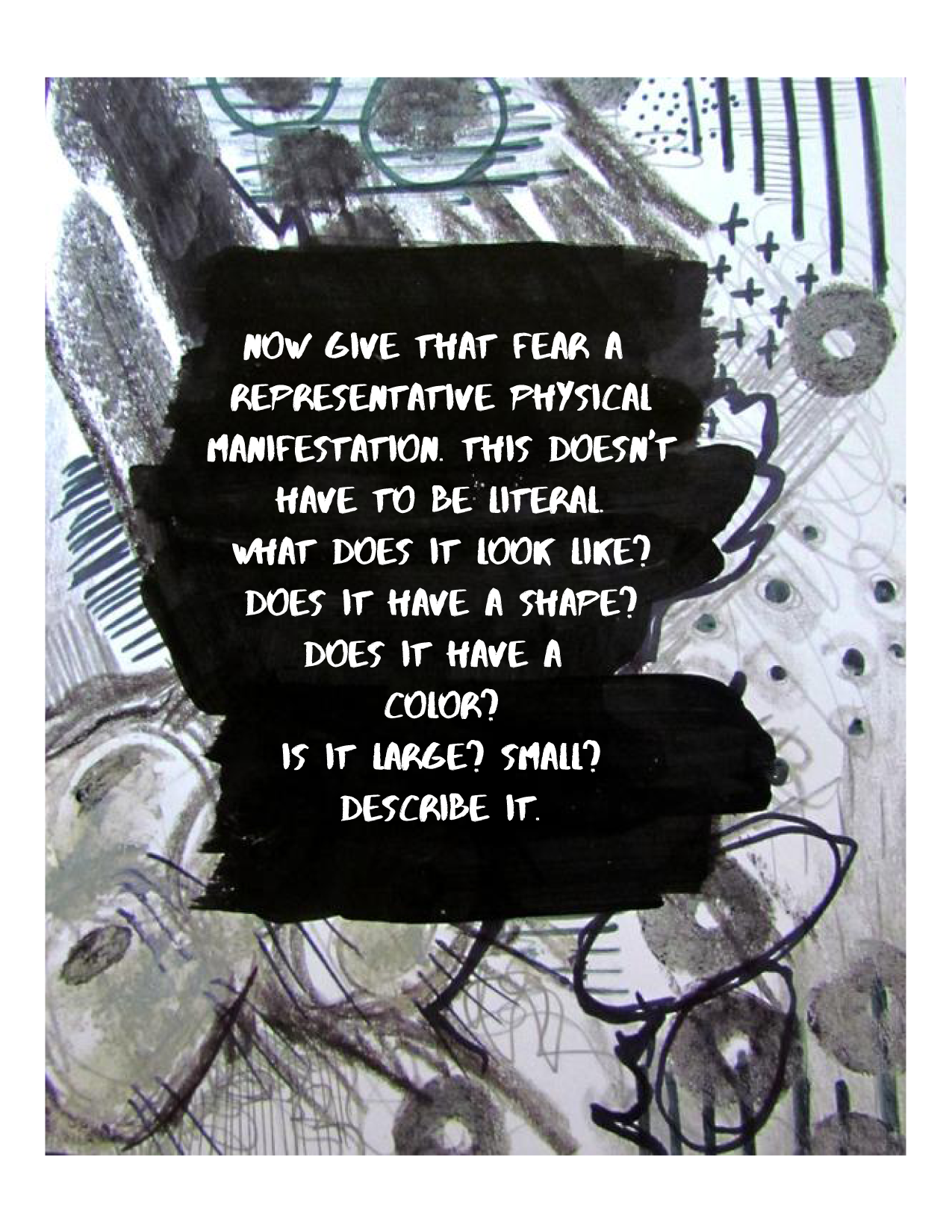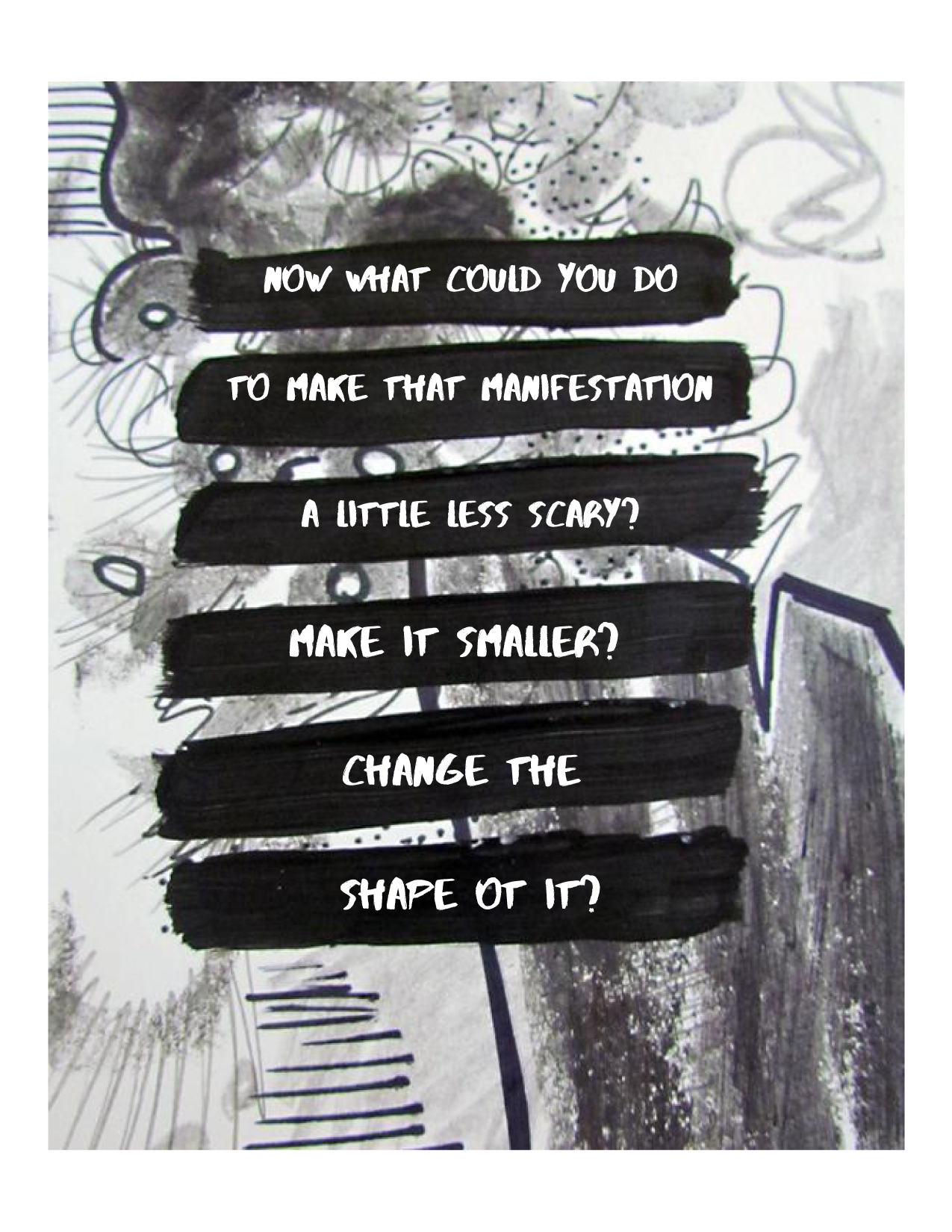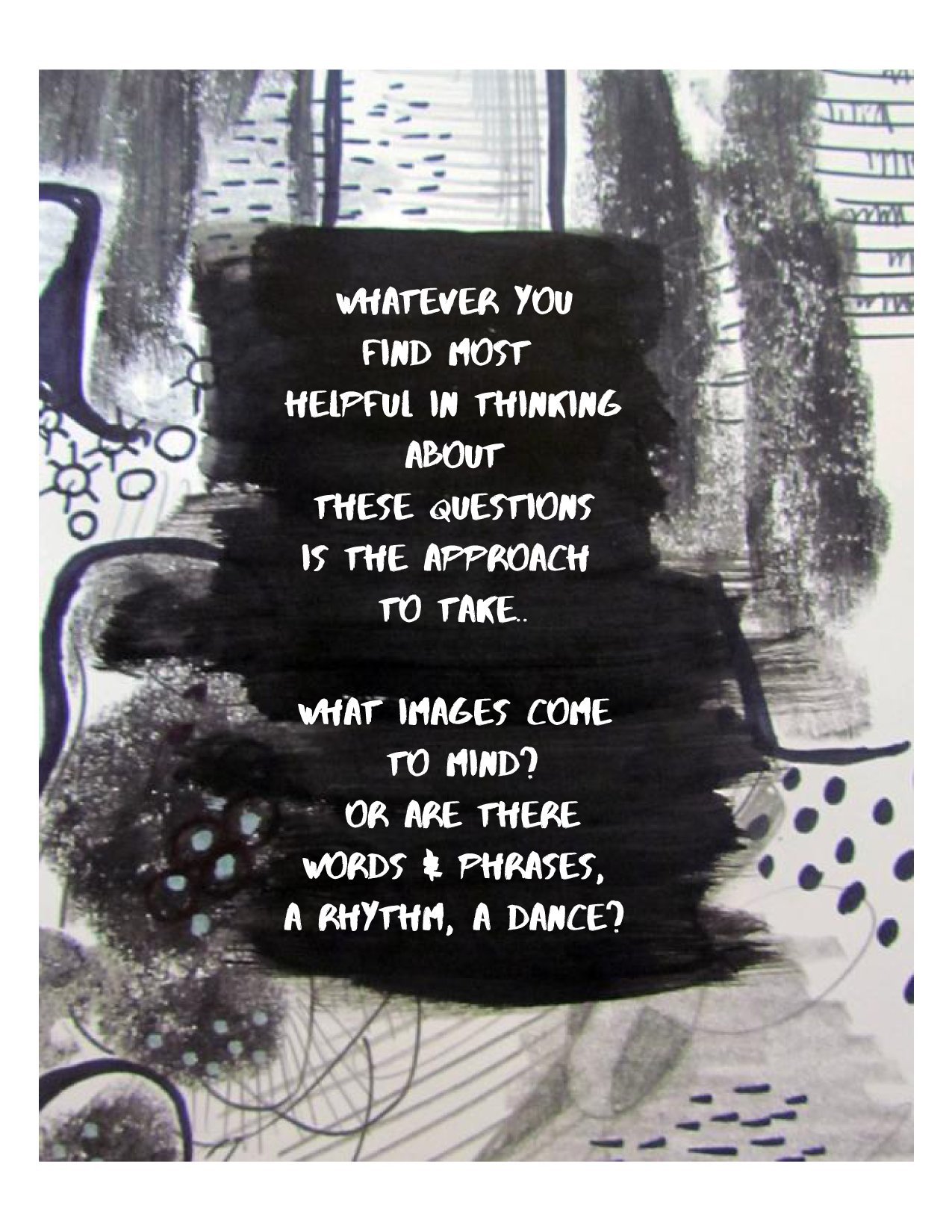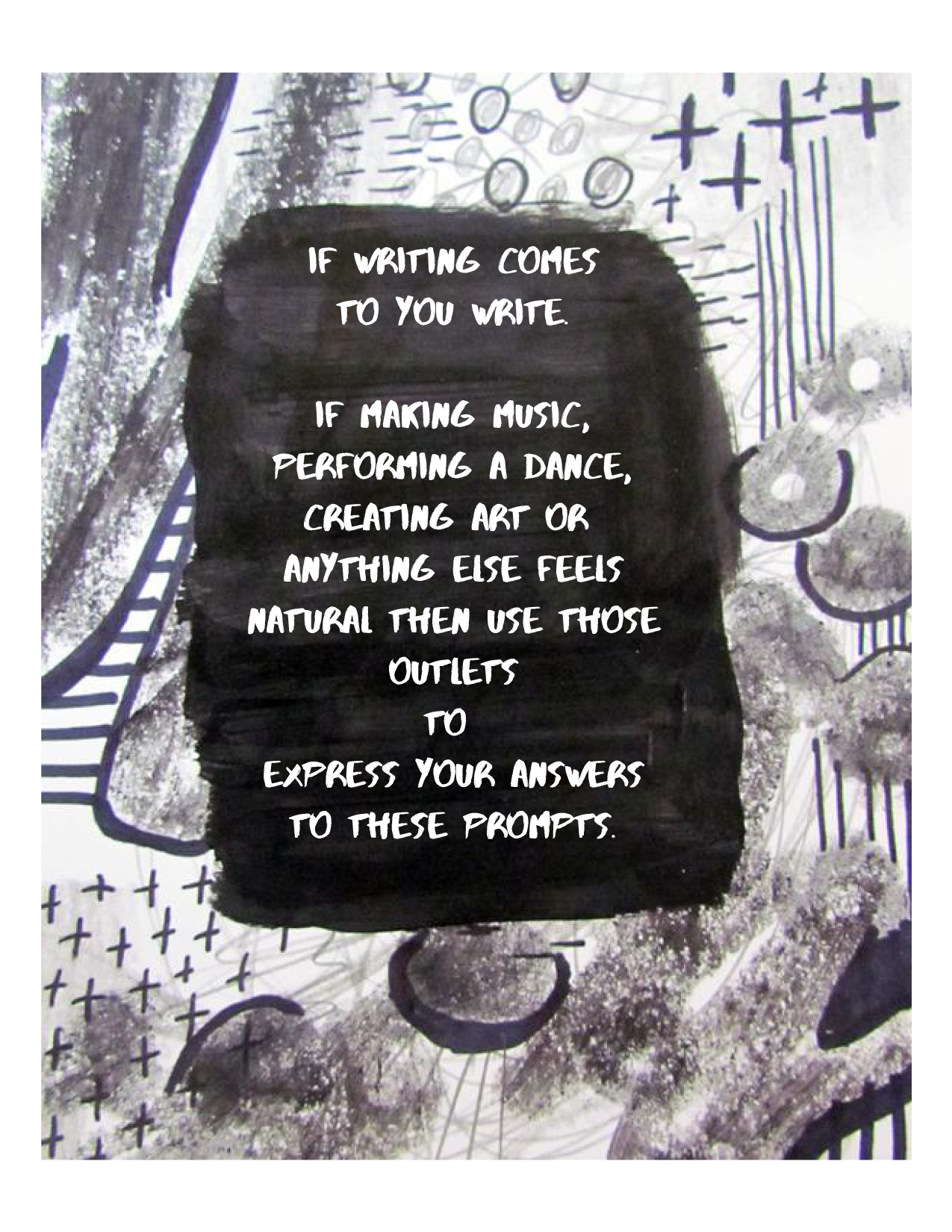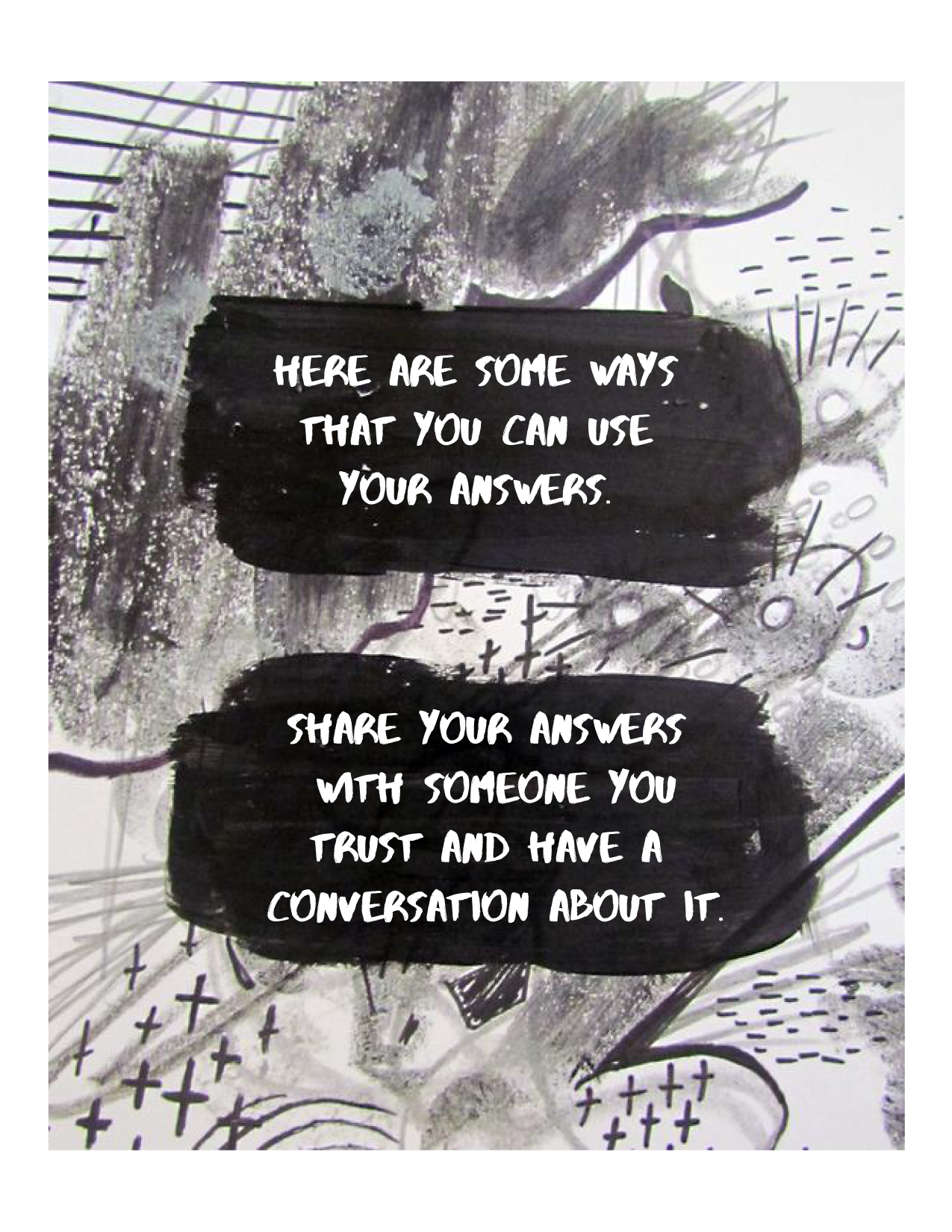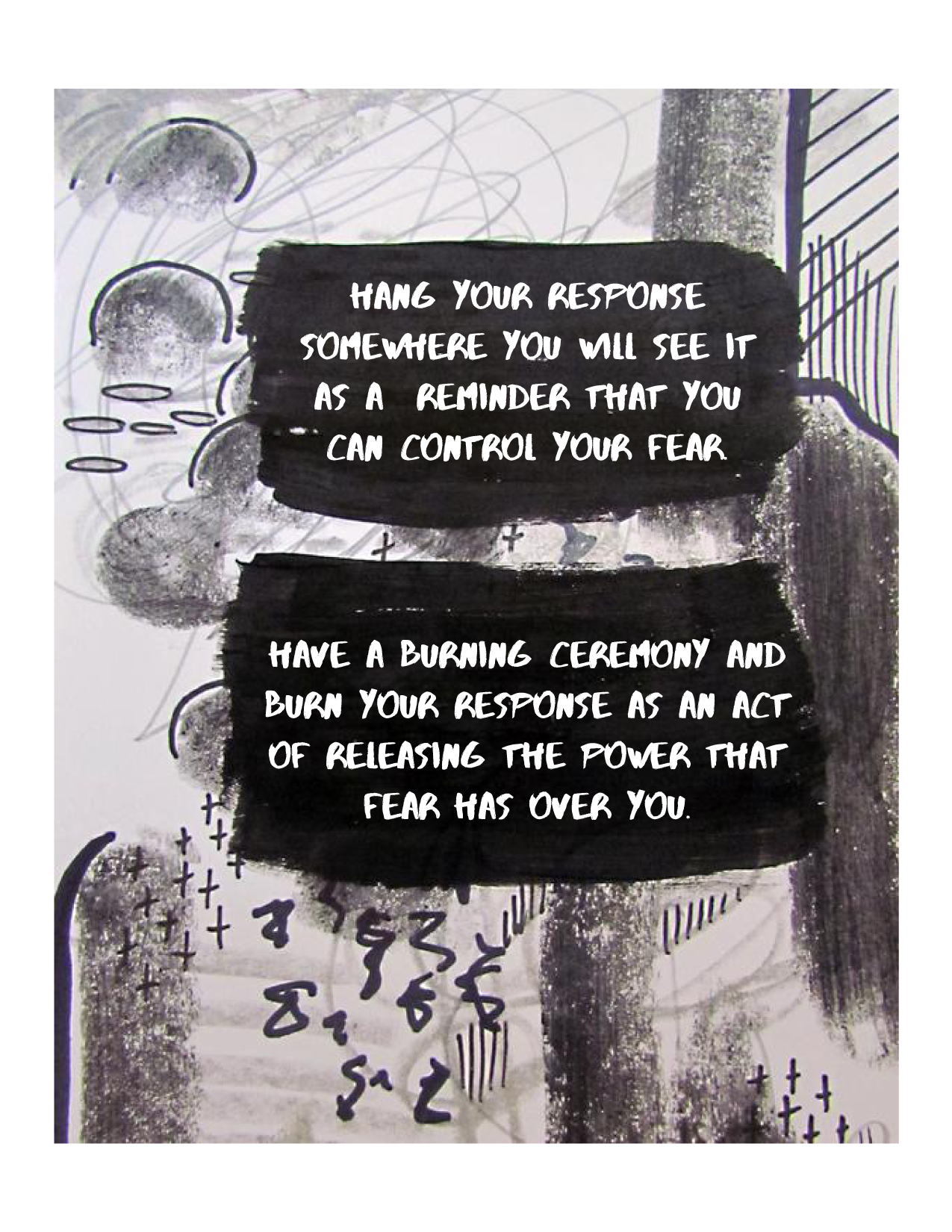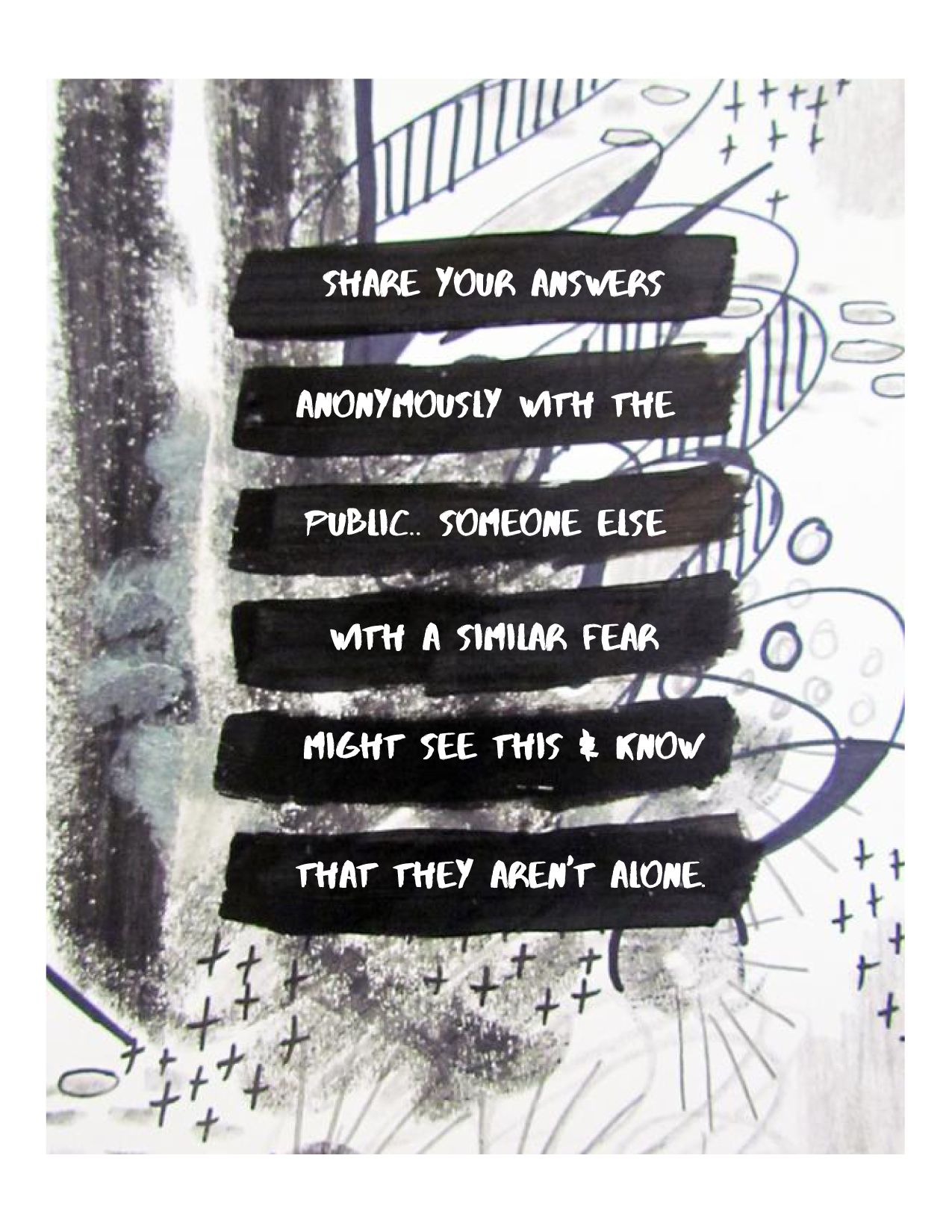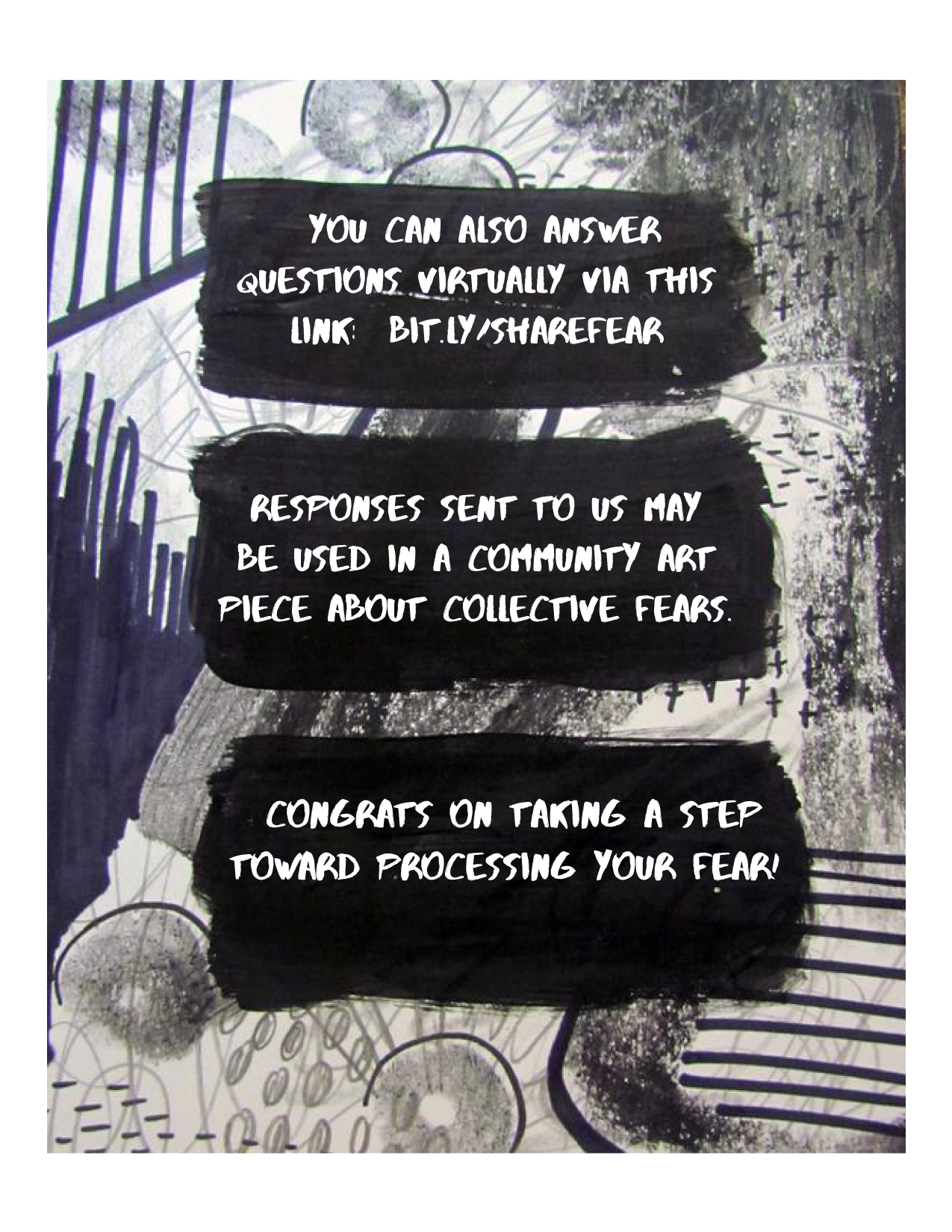Into the Deep Exhibition 2020

Exhibition Promo Postcard
Statement
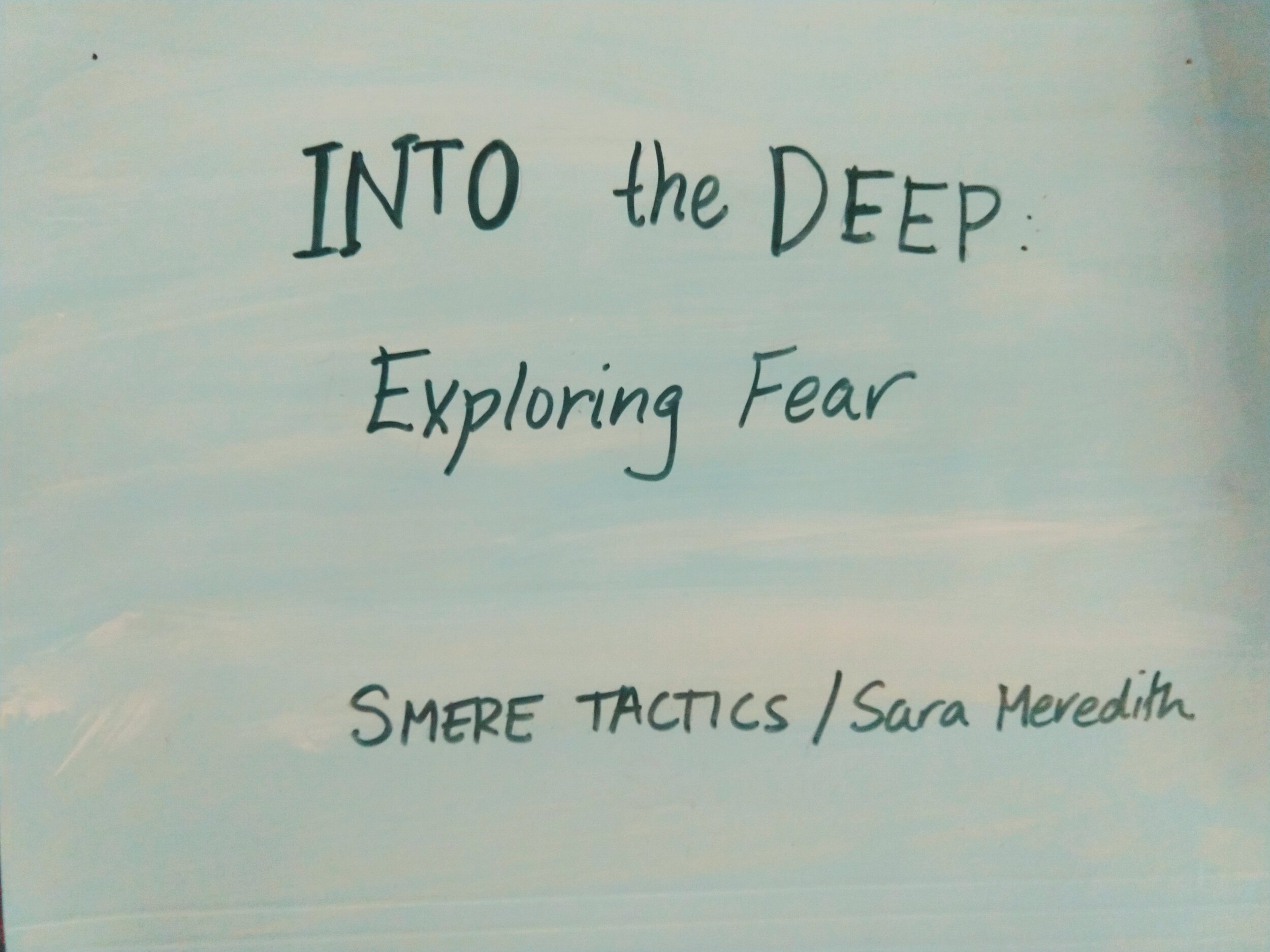
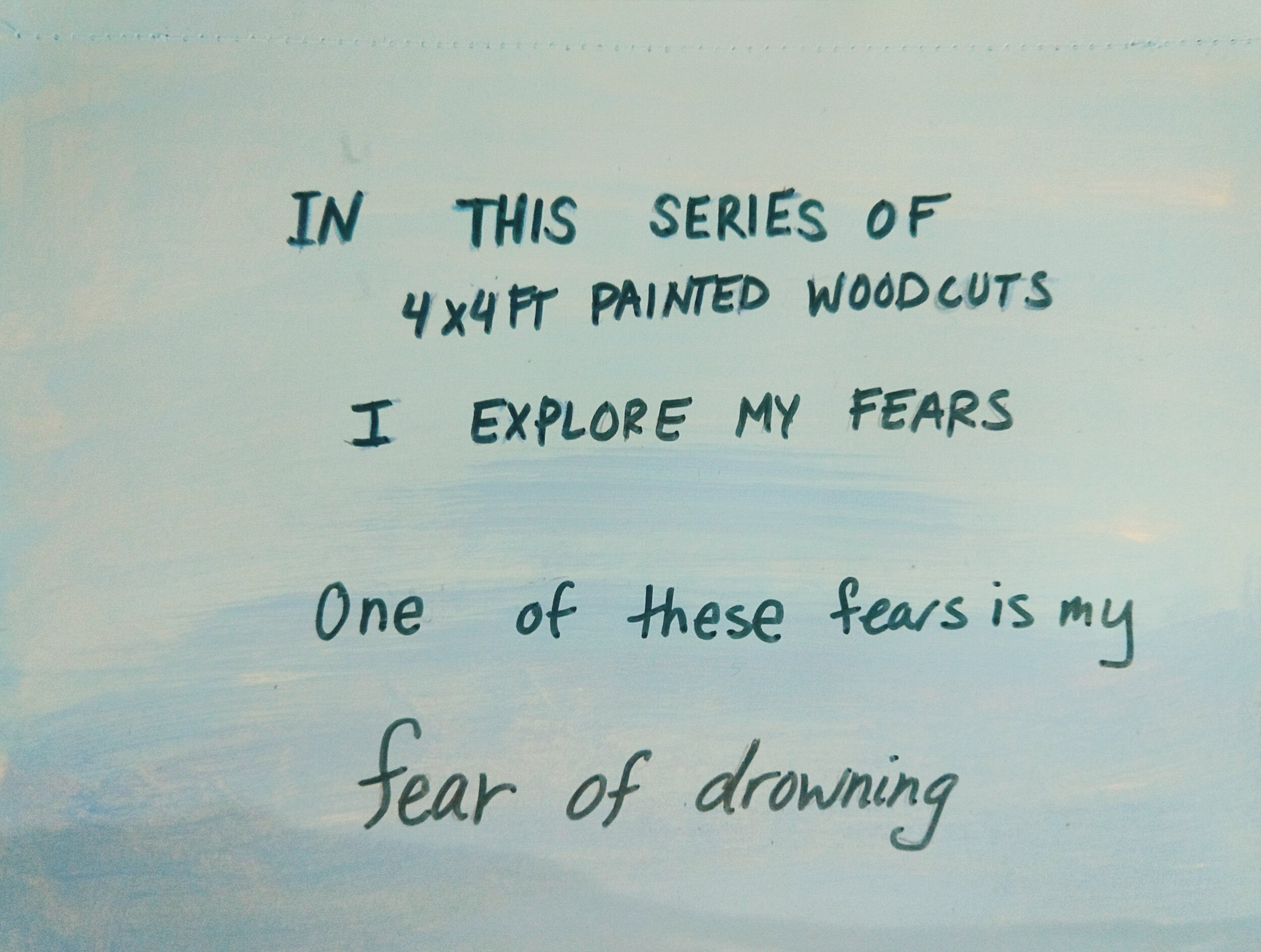
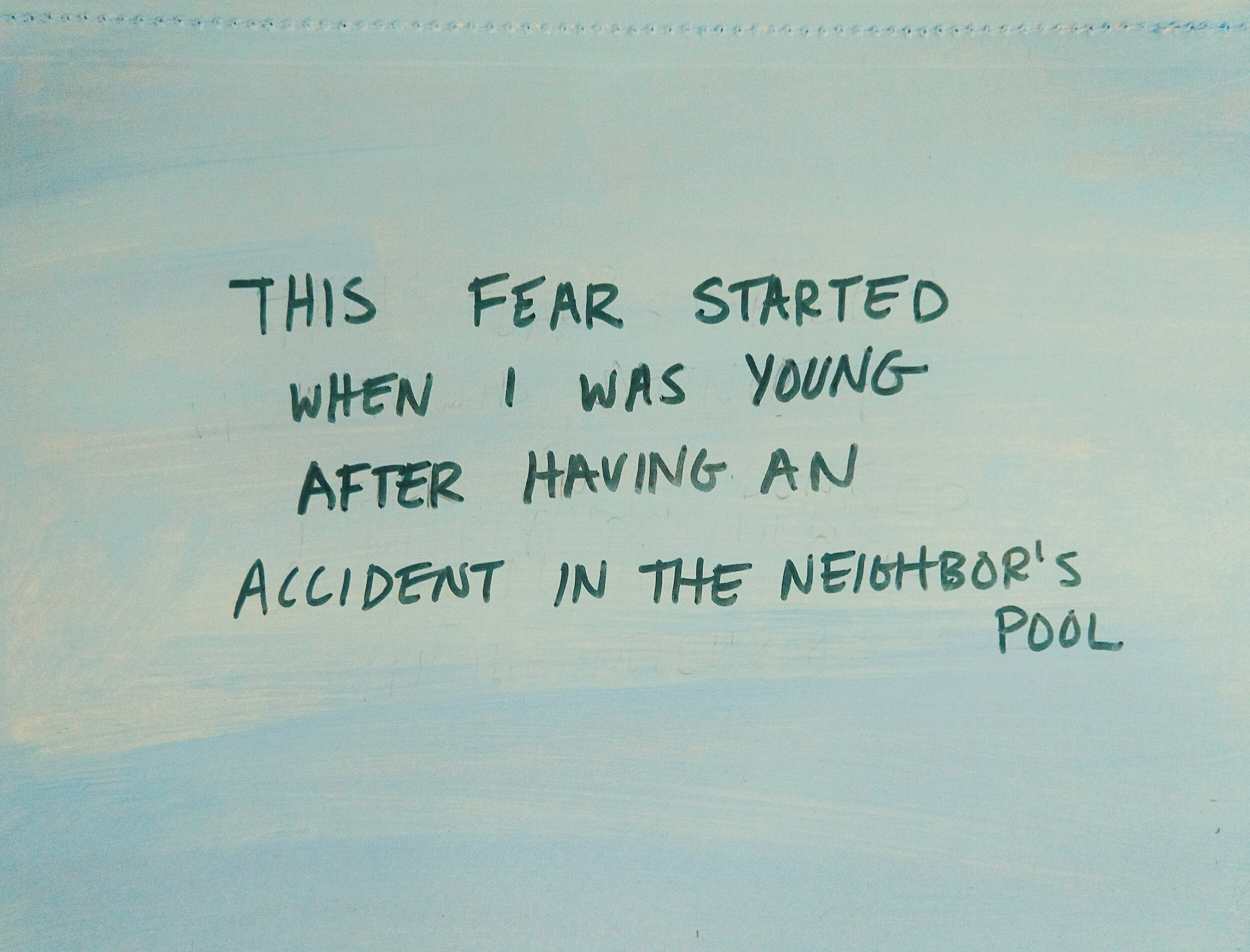
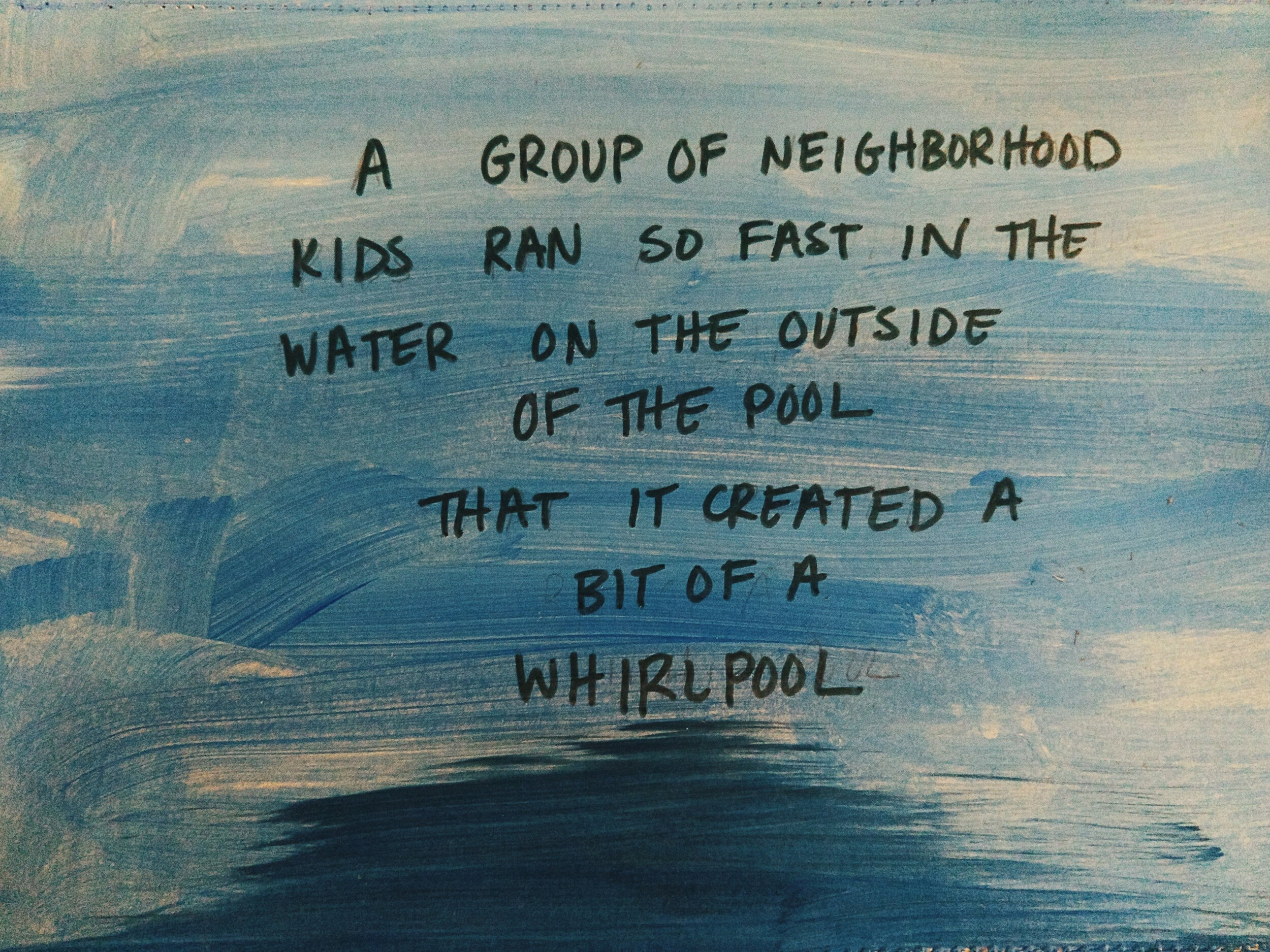
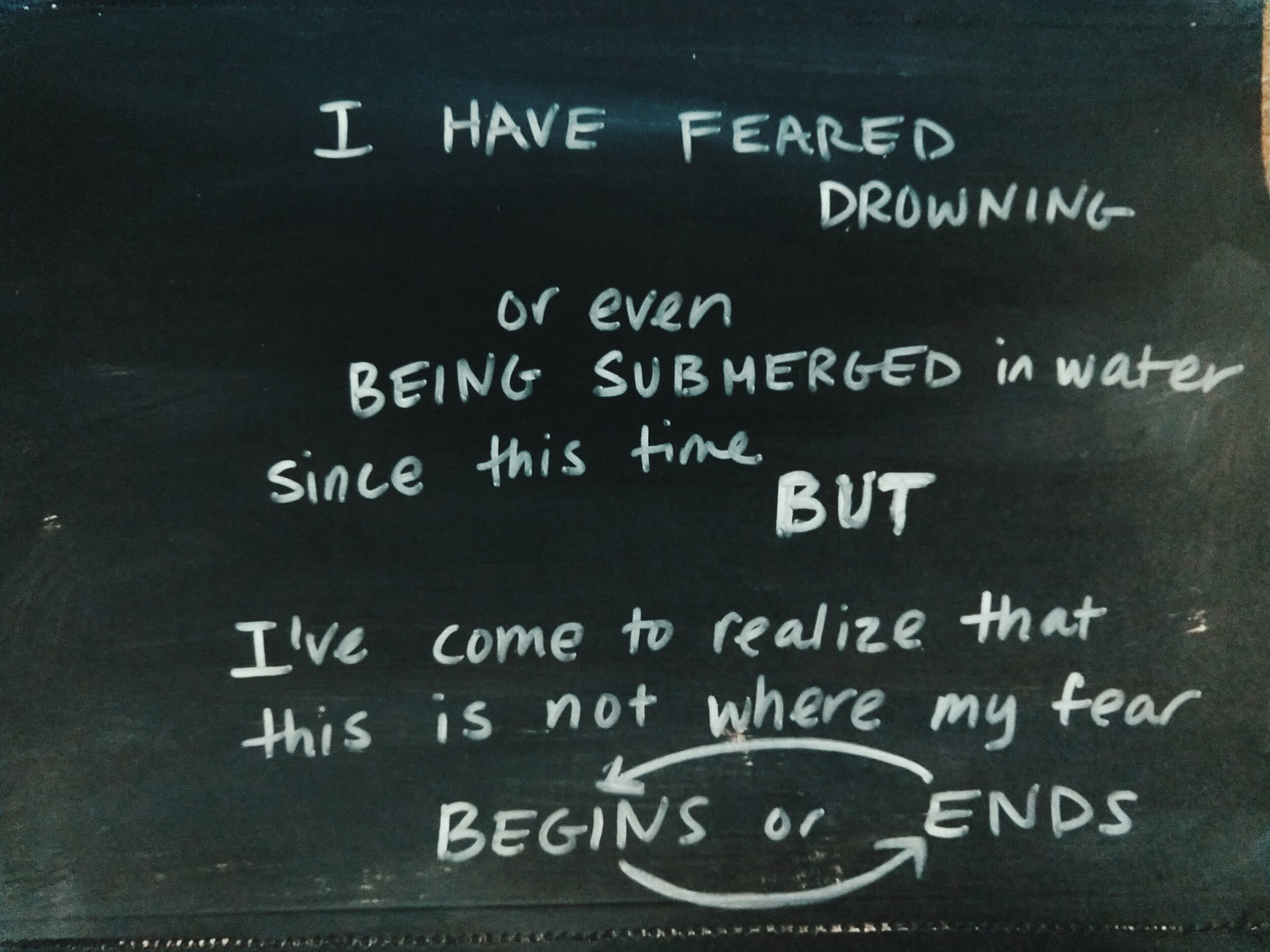
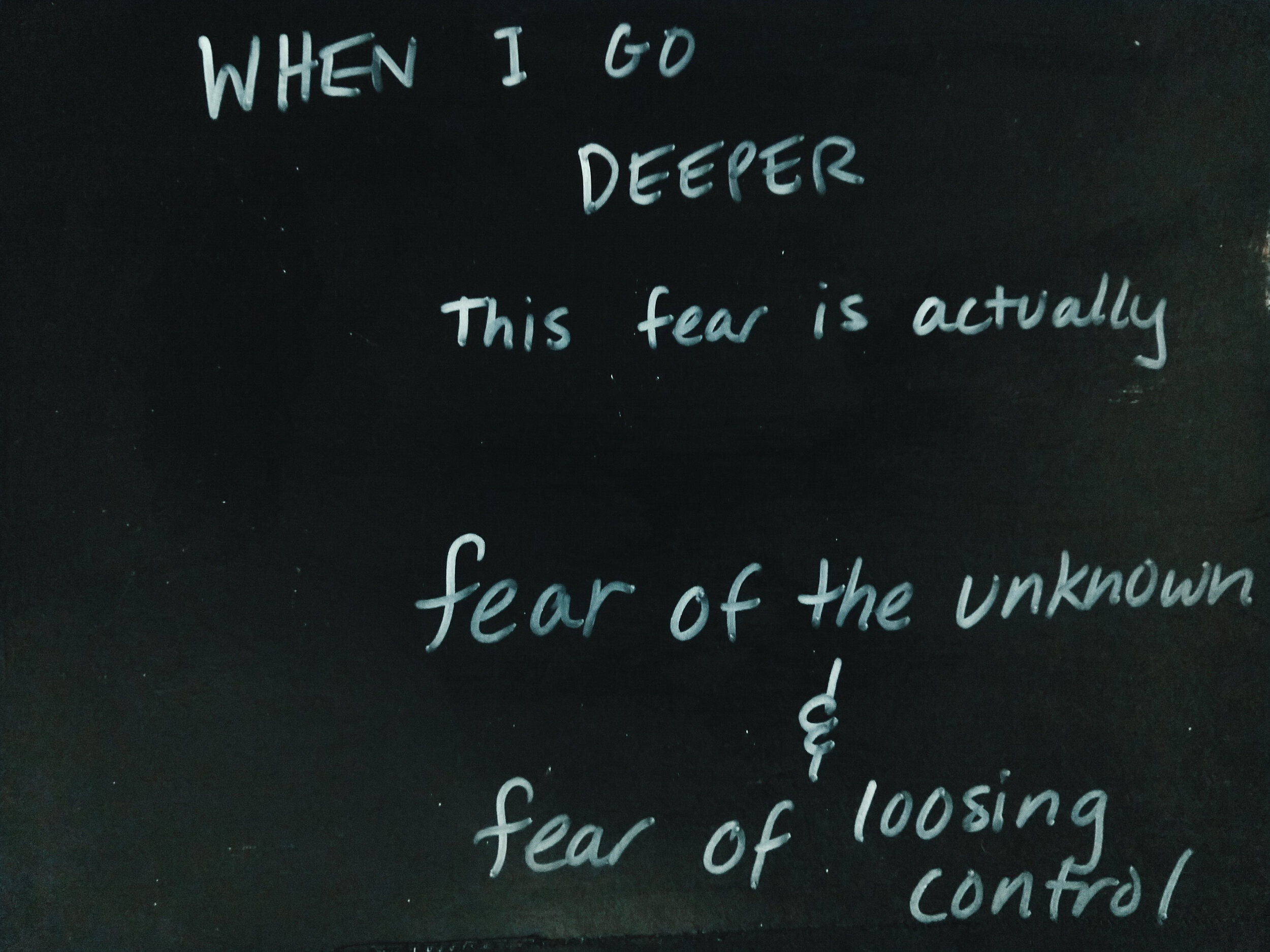
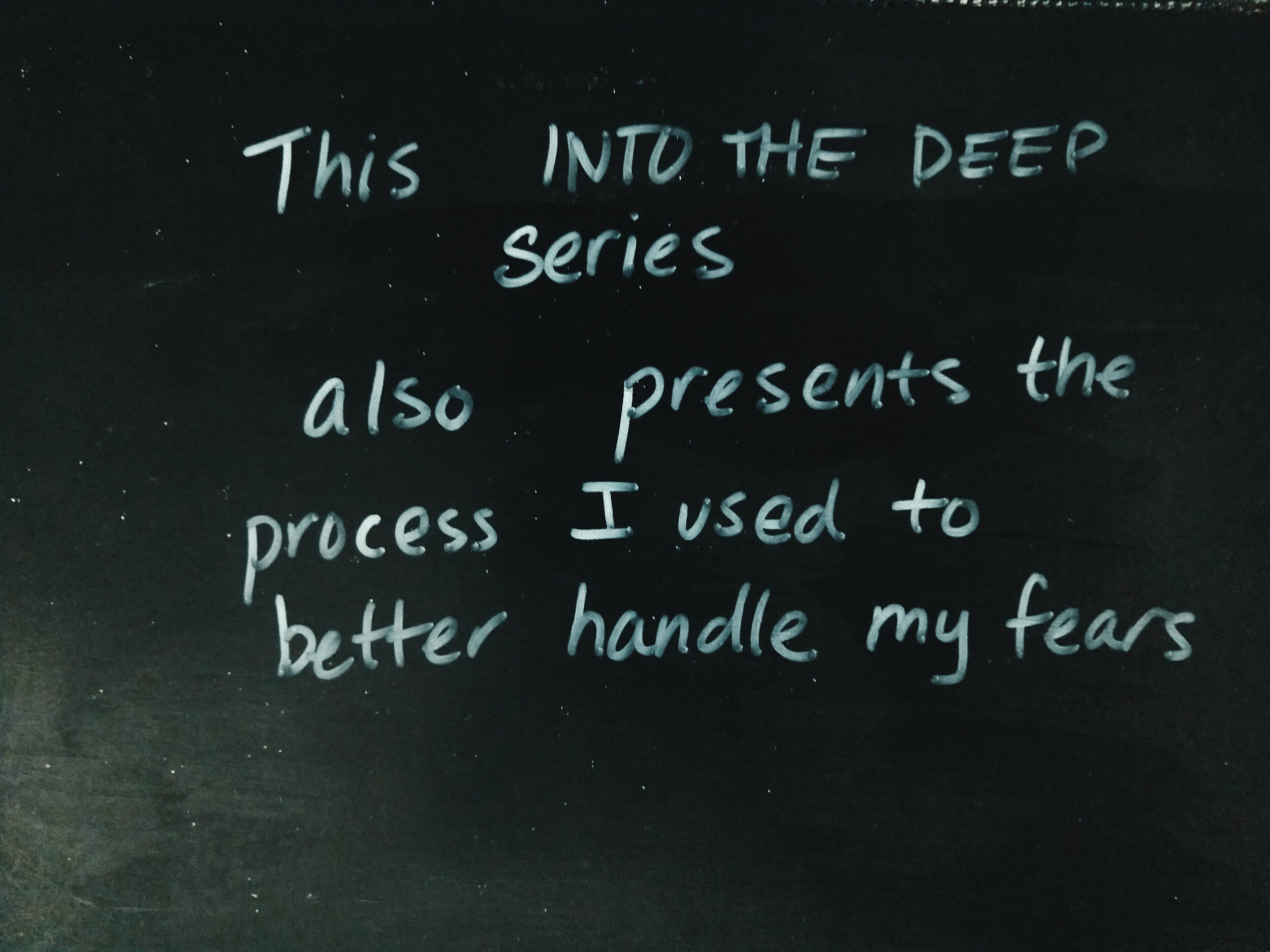











360 Gallery Views of the Exhibition
Taken by Heidi E Johnson of Blue Umbrella Arts
Momento360 | View and share your 360 photos and 360 videos, on the web and in VR
Momento360 | View and share your 360 photos and 360 videos, on the web and in VR
Momento360 | View and share your 360 photos and 360 videos, on the web and in VR
Detailed Photographs
Taken by Heidi E Johnson of Blue Umbrella Arts
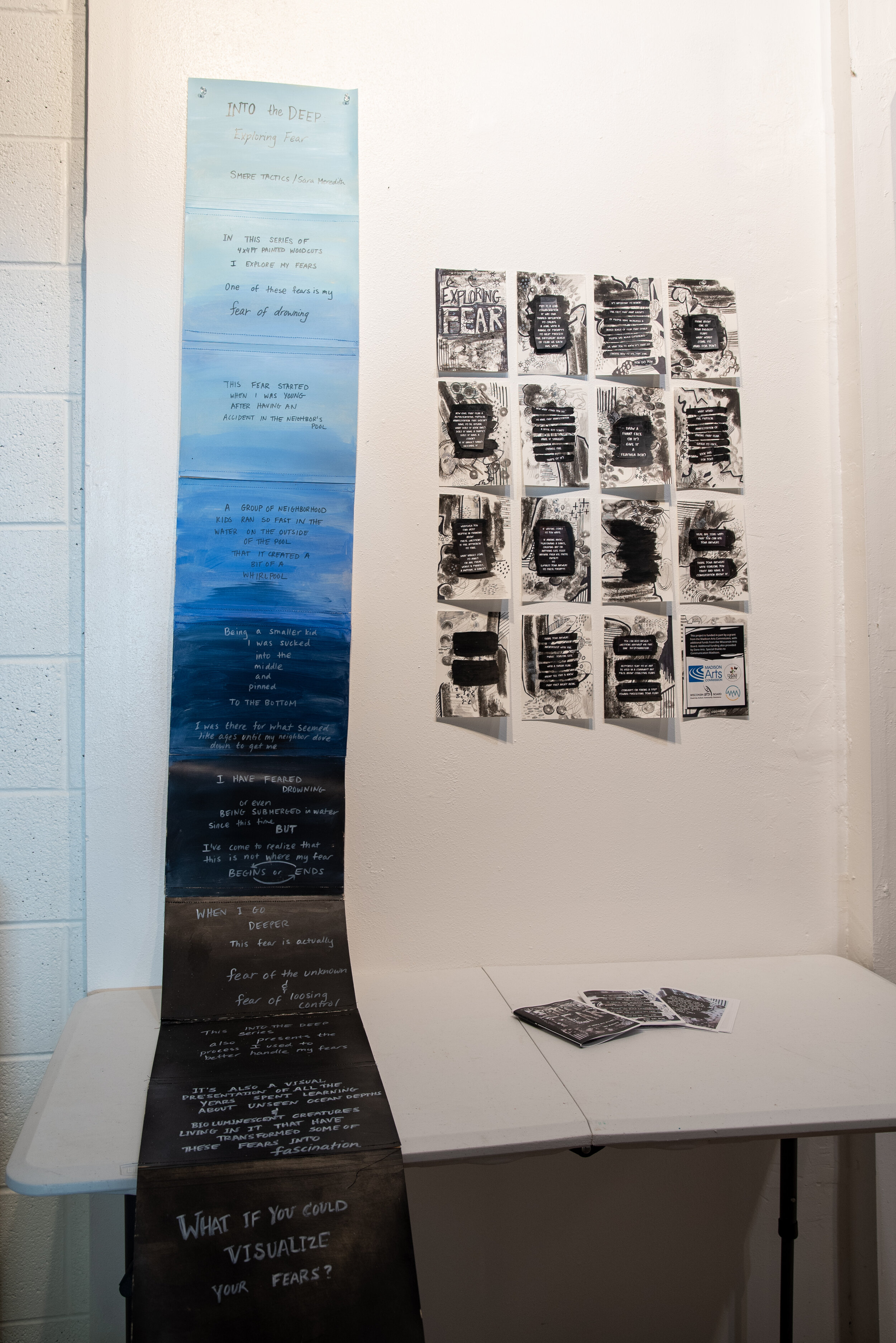
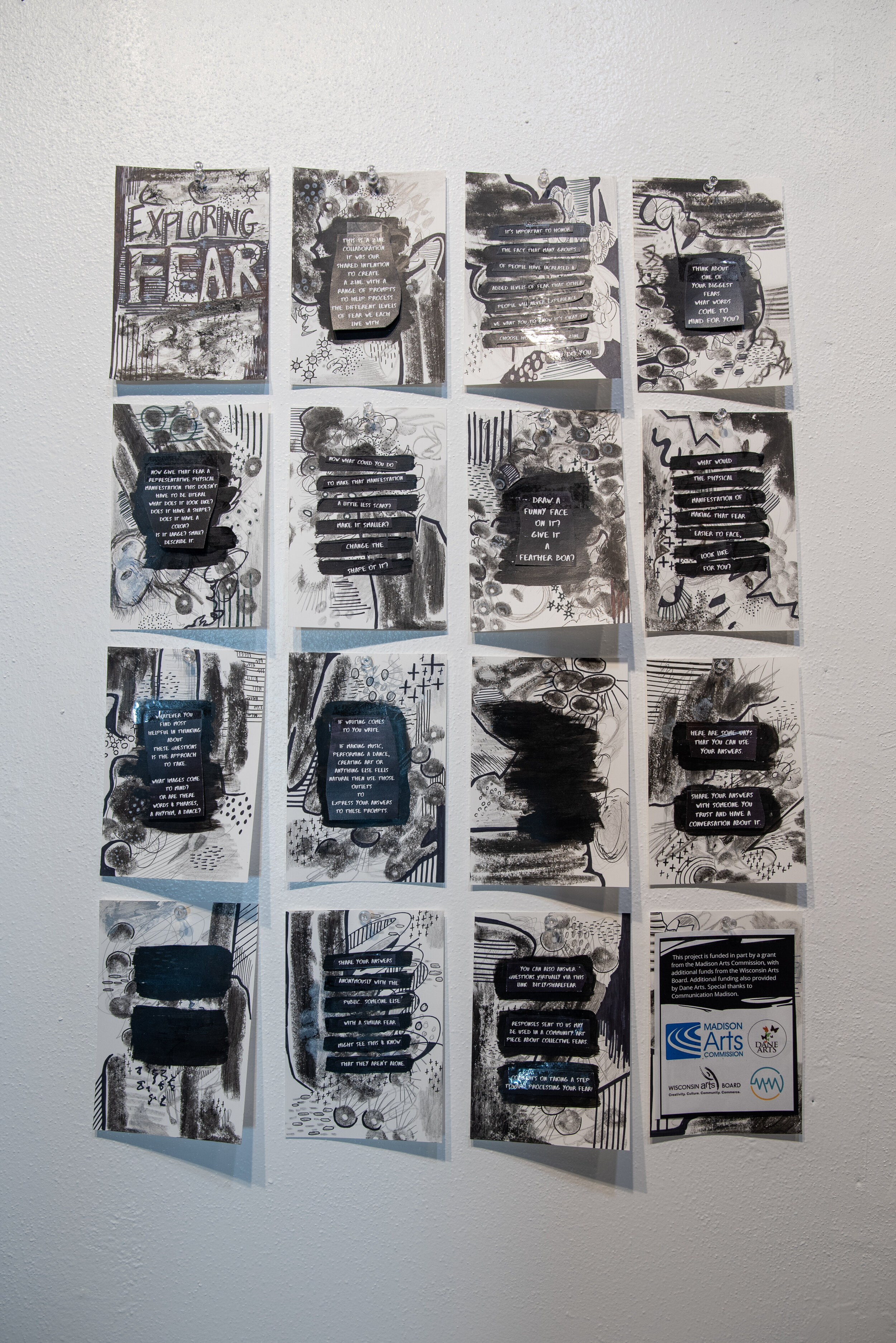
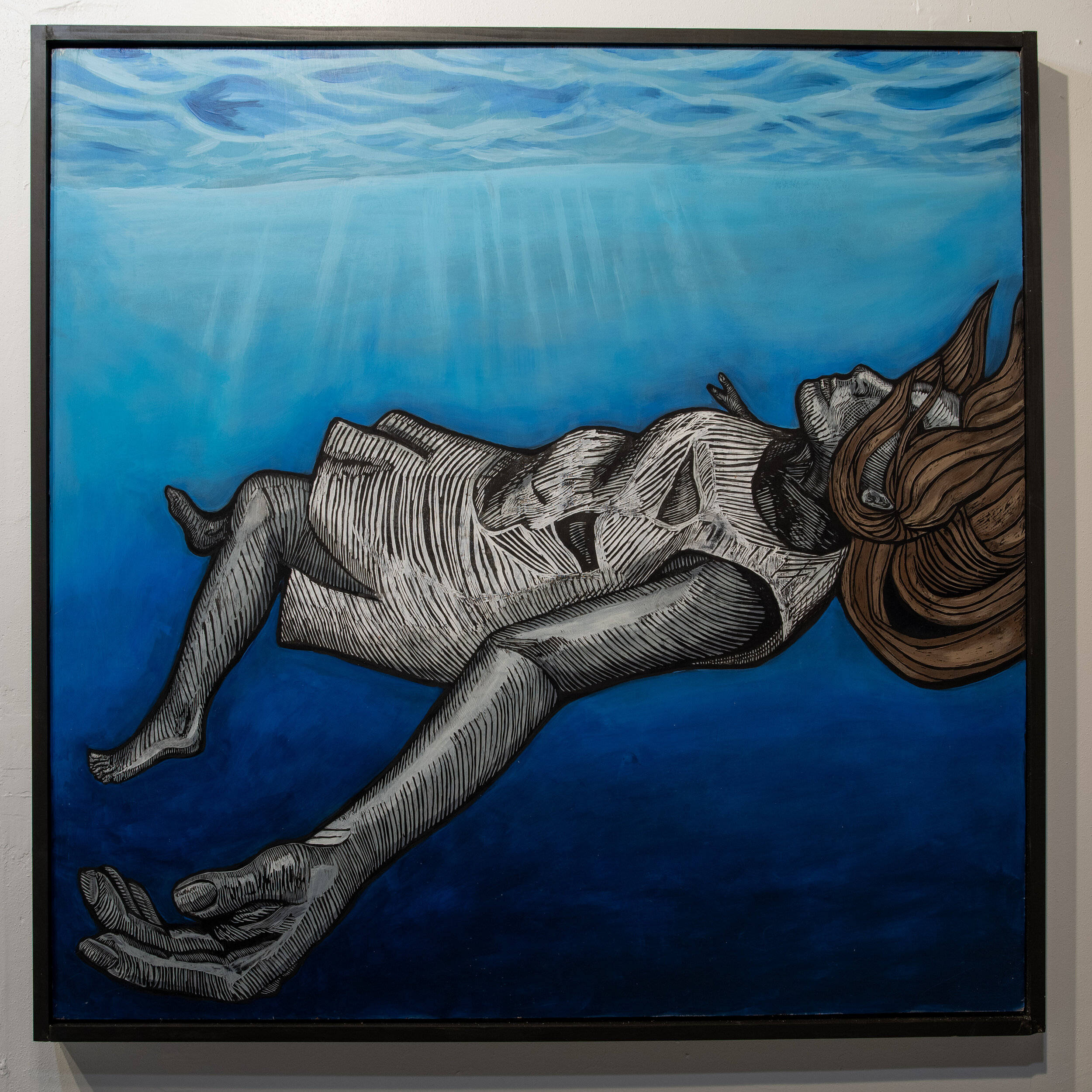
4x4’ painted woodcut
2019
Panel 1 of this series. The first step in processing fears or emotions is to be present with them, acknowledge that they are there and to give them a voice
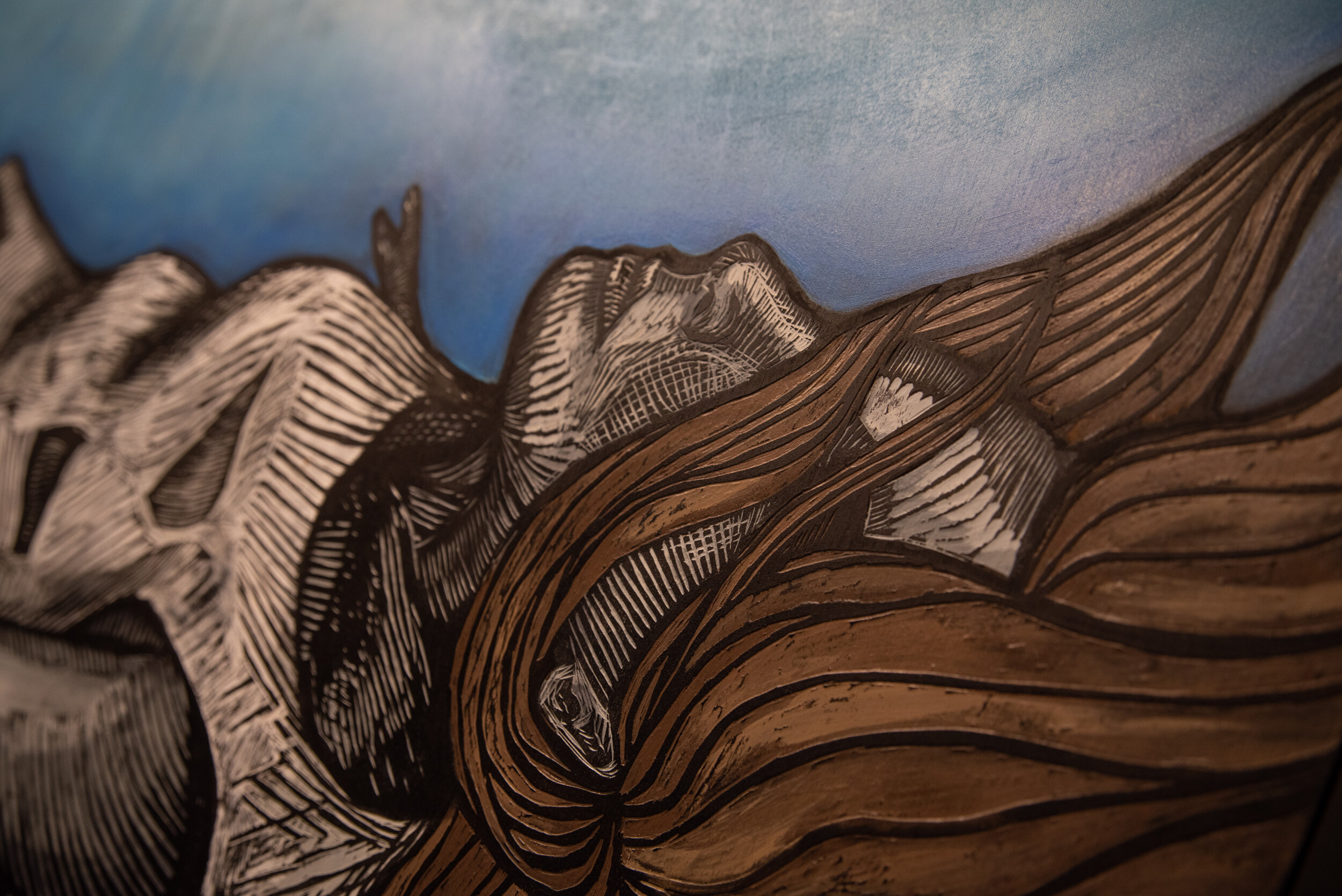
4x4’ painted woodcut
2019
How do your fears cloud your vision?
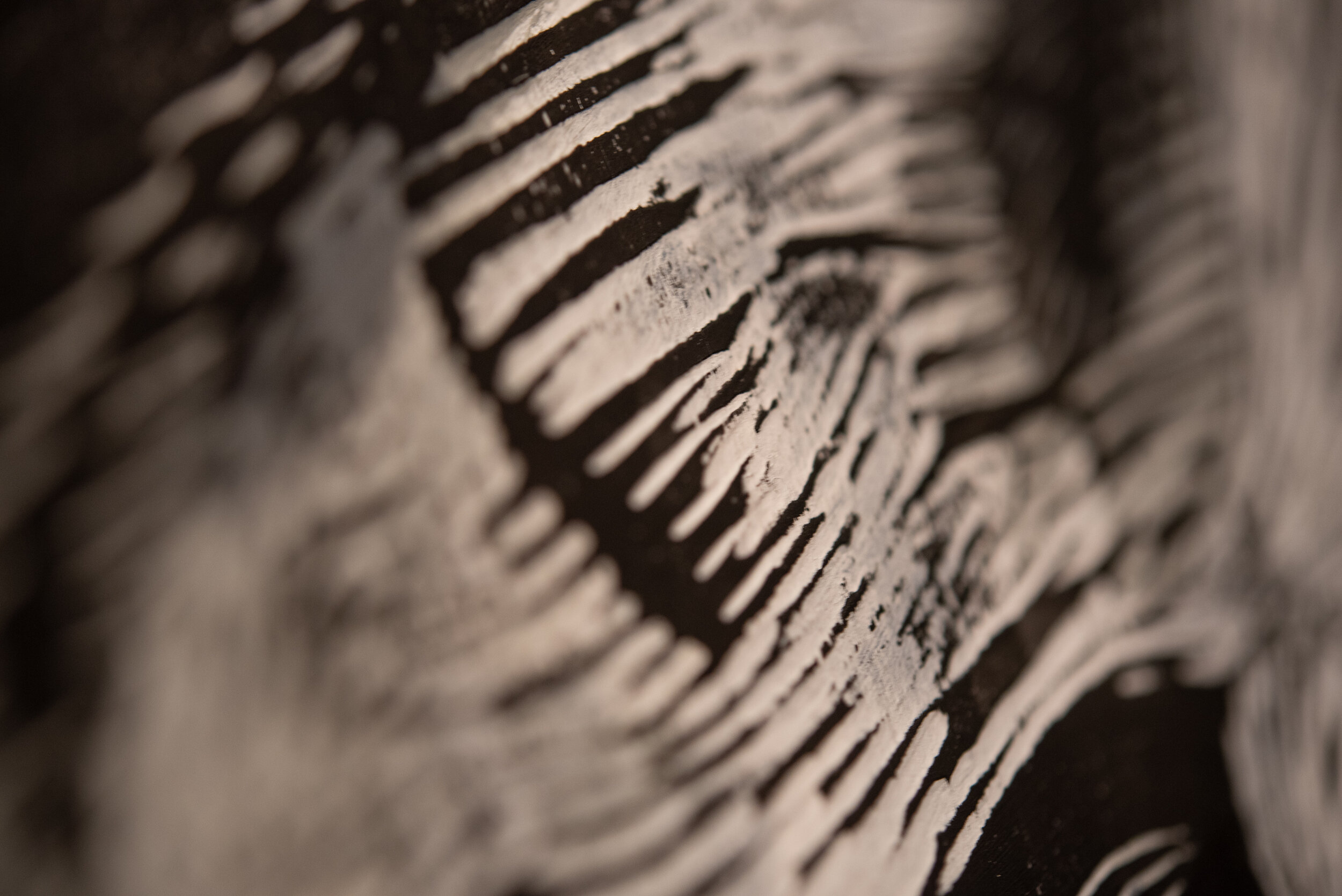
4x4’ painted woodcut
2019
woodcut texture detail

4x4’ painted woodcut
2019
Do you listen to what your fears tell you?

4x4’ painted woodcut
2019
Panel 2 of this series. After giving your fears/emotions a voice detachment offers the opportunity to become an observer of your mind w/o judgement.
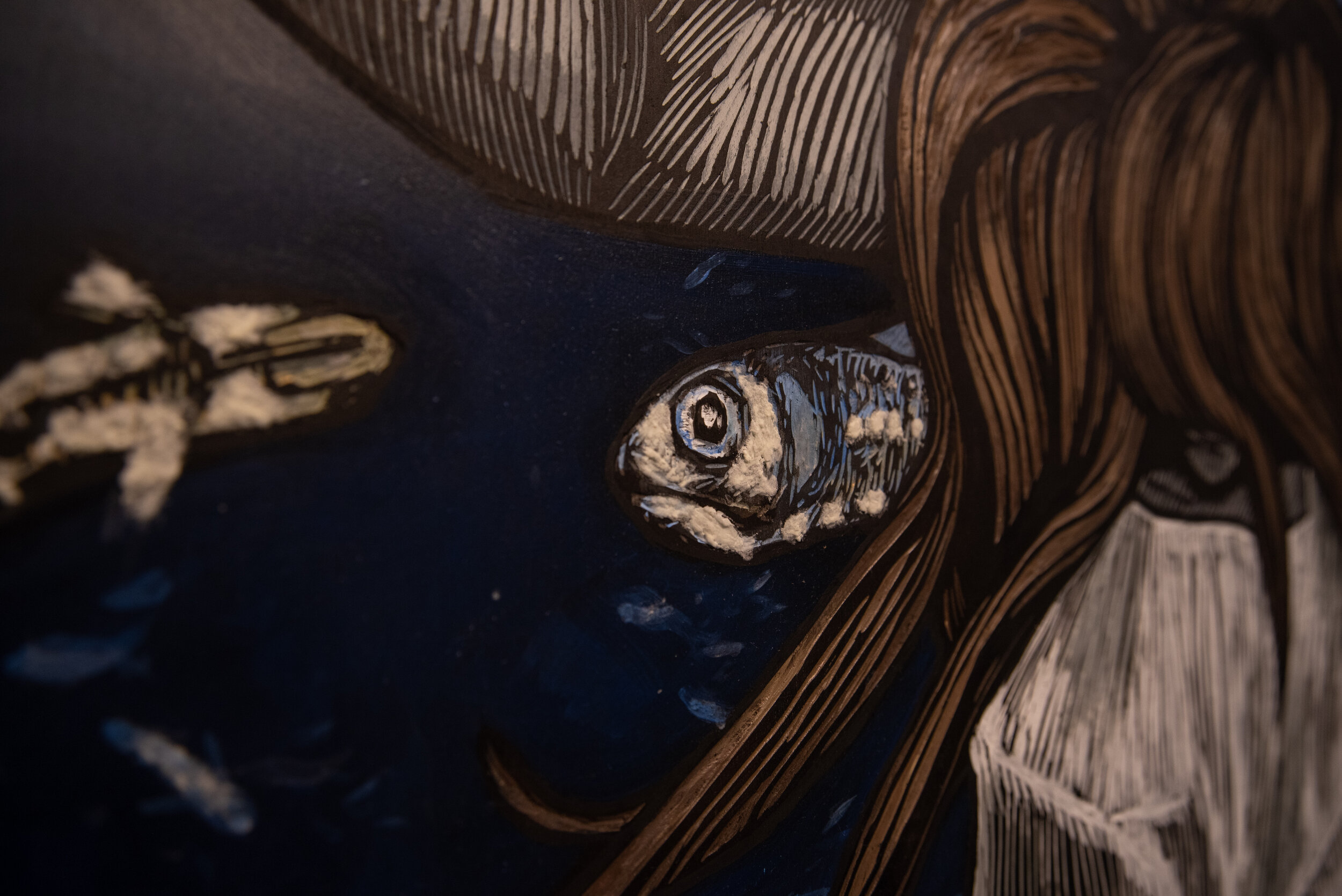
4x4’ painted woodcut
2019
This panel also descends to from surface depth to Mesopelagic depths of 660-3300ft.
The fish depicted here are lantern fish which are part of the deep scattering layer of the ocean. When we first started studying the ocean with the sonar bounced back at around 660ft leading scientists to believe that the ocean was only that deep. They later discovered that the sonar was scattering from the bladders of these fish that live in the depths during the day and travel upwards to eat during the night
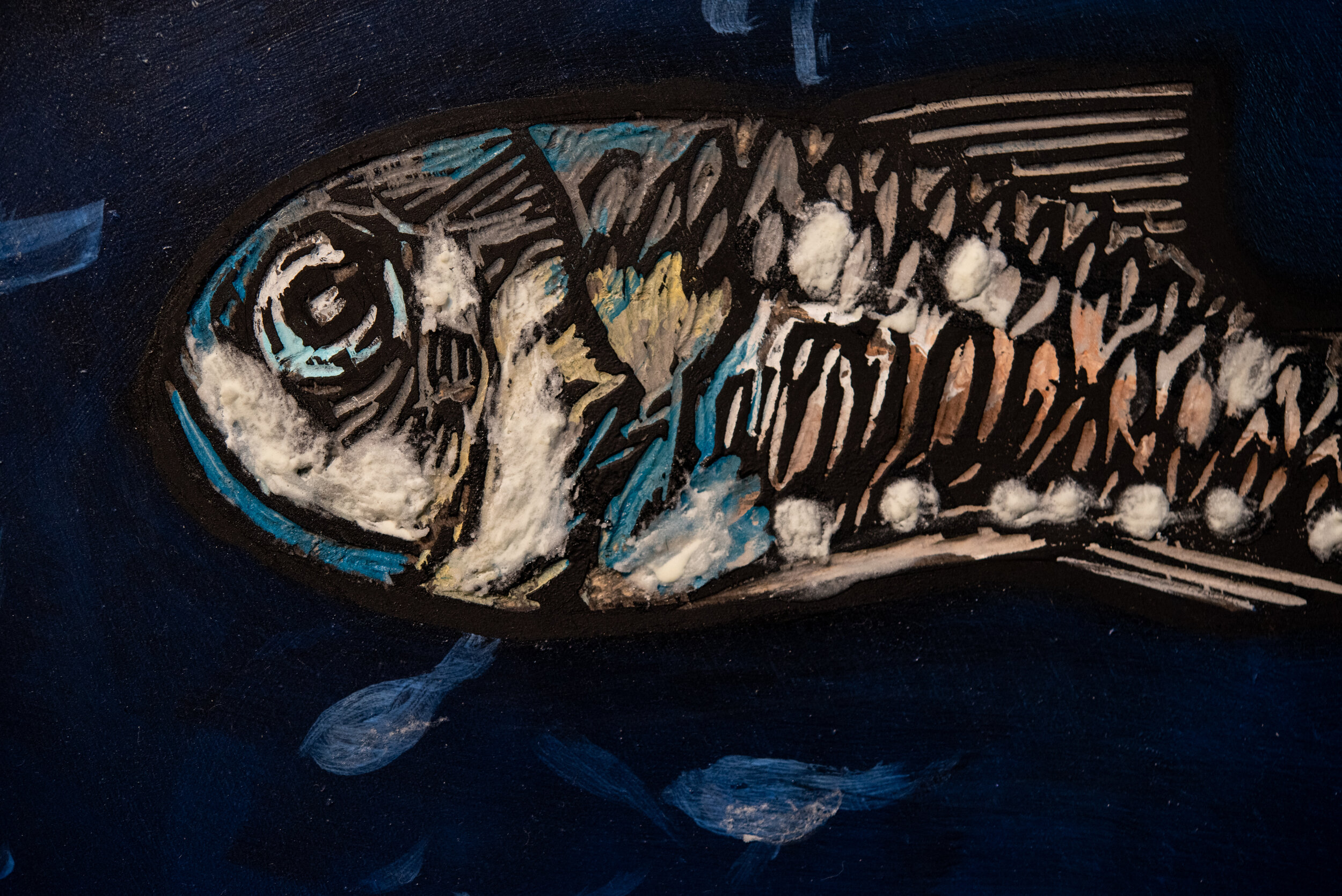
4x4’ painted woodcut
2019
Lantern fish, like many organisms in the depths create their own light by using photophores. This process is known as bioluminescence.
Did you know that bioluminescence is the most prevalent form of communication on Earth?
To replicate this bioluminescence these fish are painted with phosphorescent paint so they glow in the dark
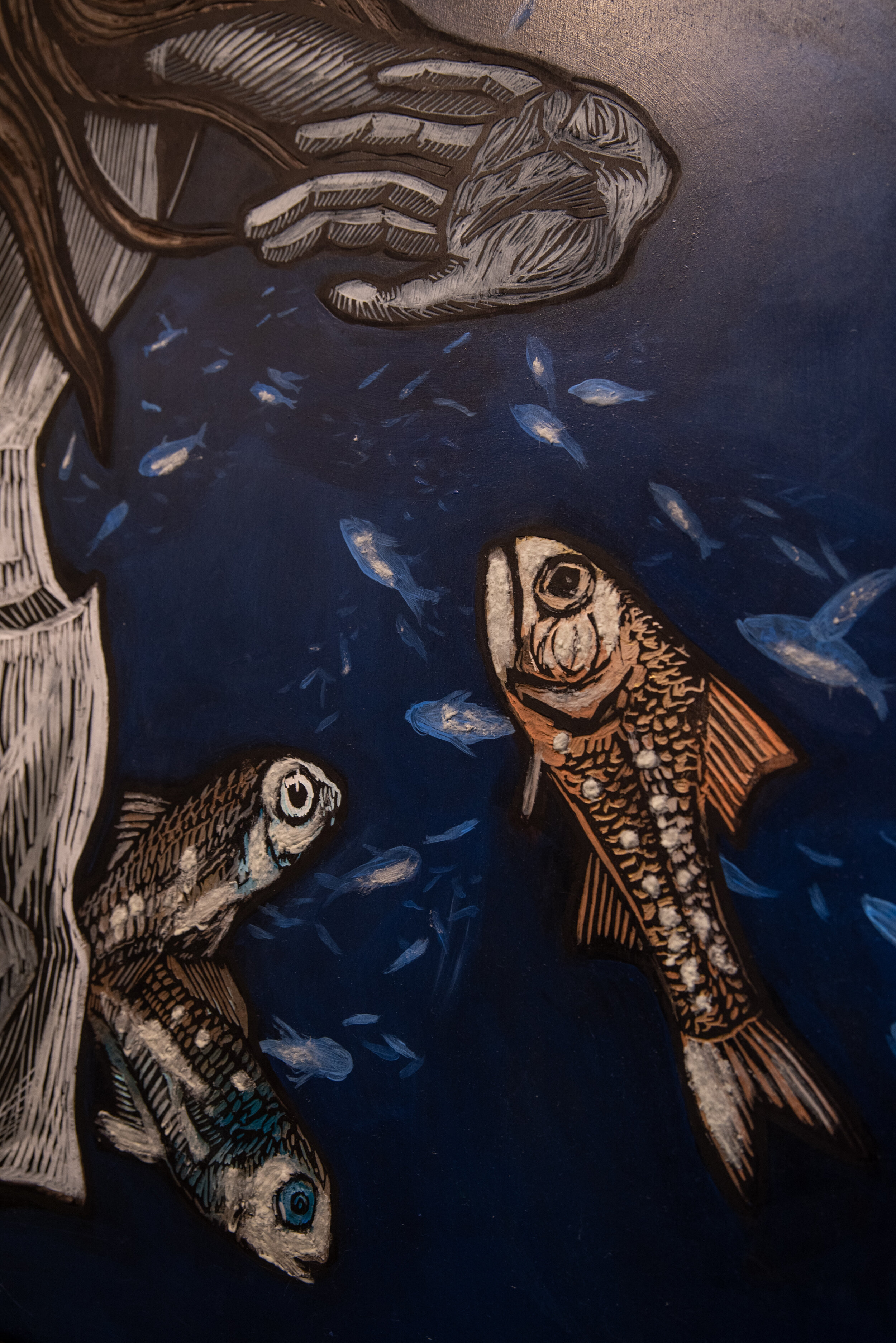
4x4’ painted woodcut
2019
At mesopelagic depths the temperature ranges from 68-39F and the pressure is 1470psi ( pounds per square inch) that would be like having a horse stand on every inch of your body all at once
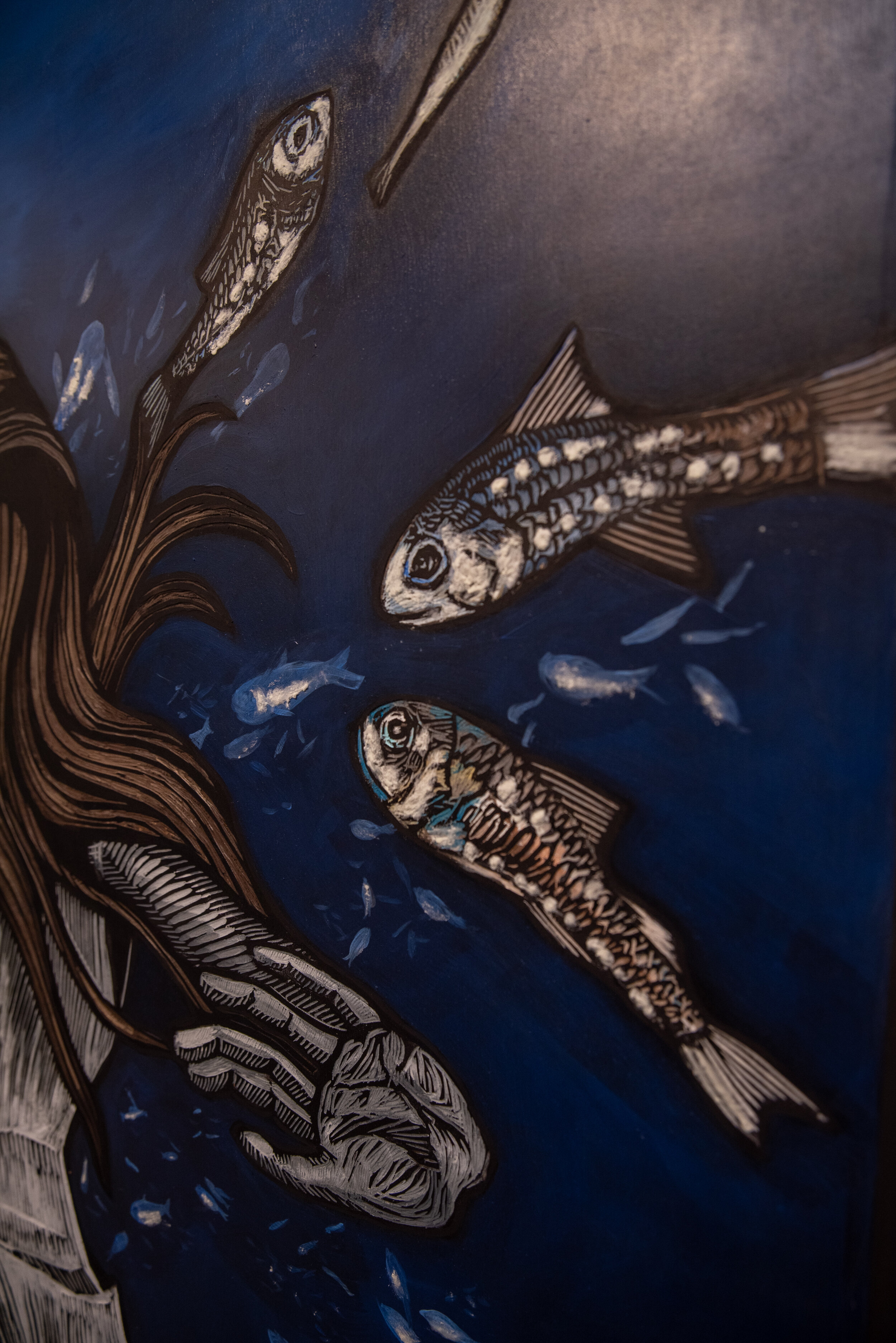
4x4’ painted woodcut
2019
To give you an idea of what the human body can handle in the depths:
The world record for deepest free dive ( diving on one breath of air) is 214m ( 702ft) that same experienced diver broke his record diving to 253m (830ft) but sustained serious decompression injuries
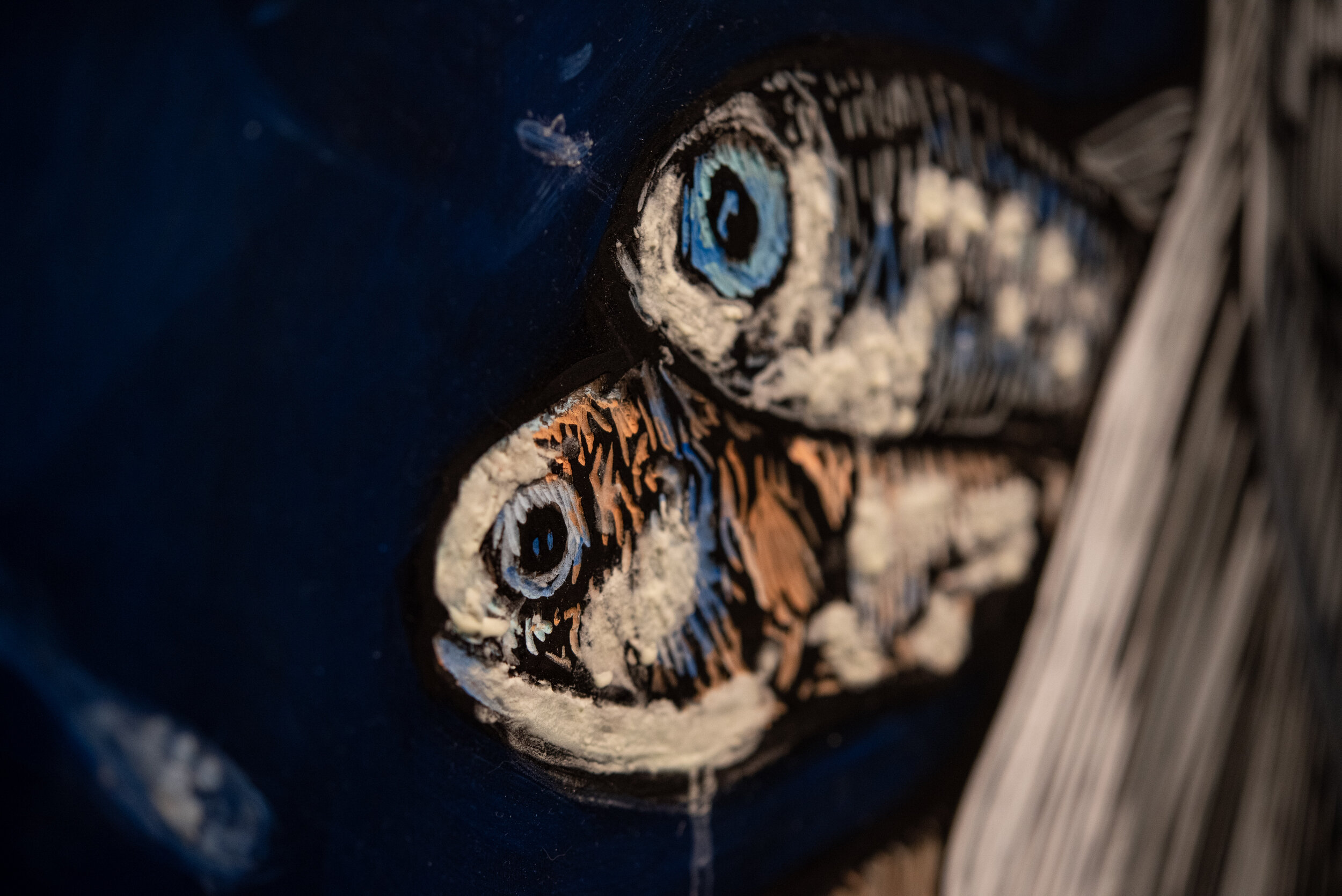
4x4’ painted woodcut
2019
Different species of lantern fish have different patterns of lights on their sides to identify the male/ females of their species

4x4’ painted woodcut
2019
The lantern fish depicted here are a a bit smaller in nature ranging in size from less than an inch to 11 inches in length
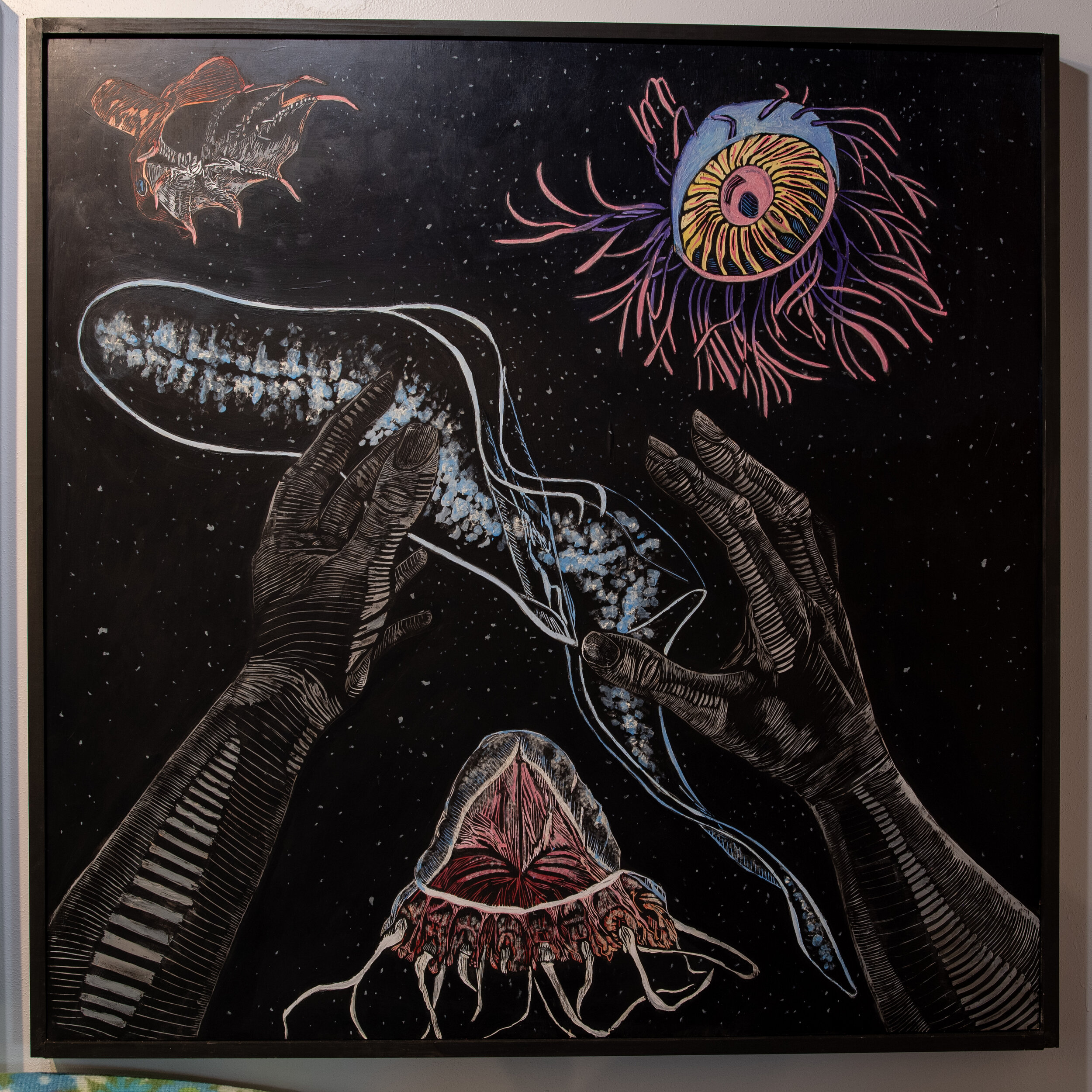
4x4’ painted woodcut
2020
Panel 3 of this series. Once you are an observer of your fears/ emotions you can test out different ways of making decisions without fear being the driver.
What ways can you reframe your fears to help move through them?
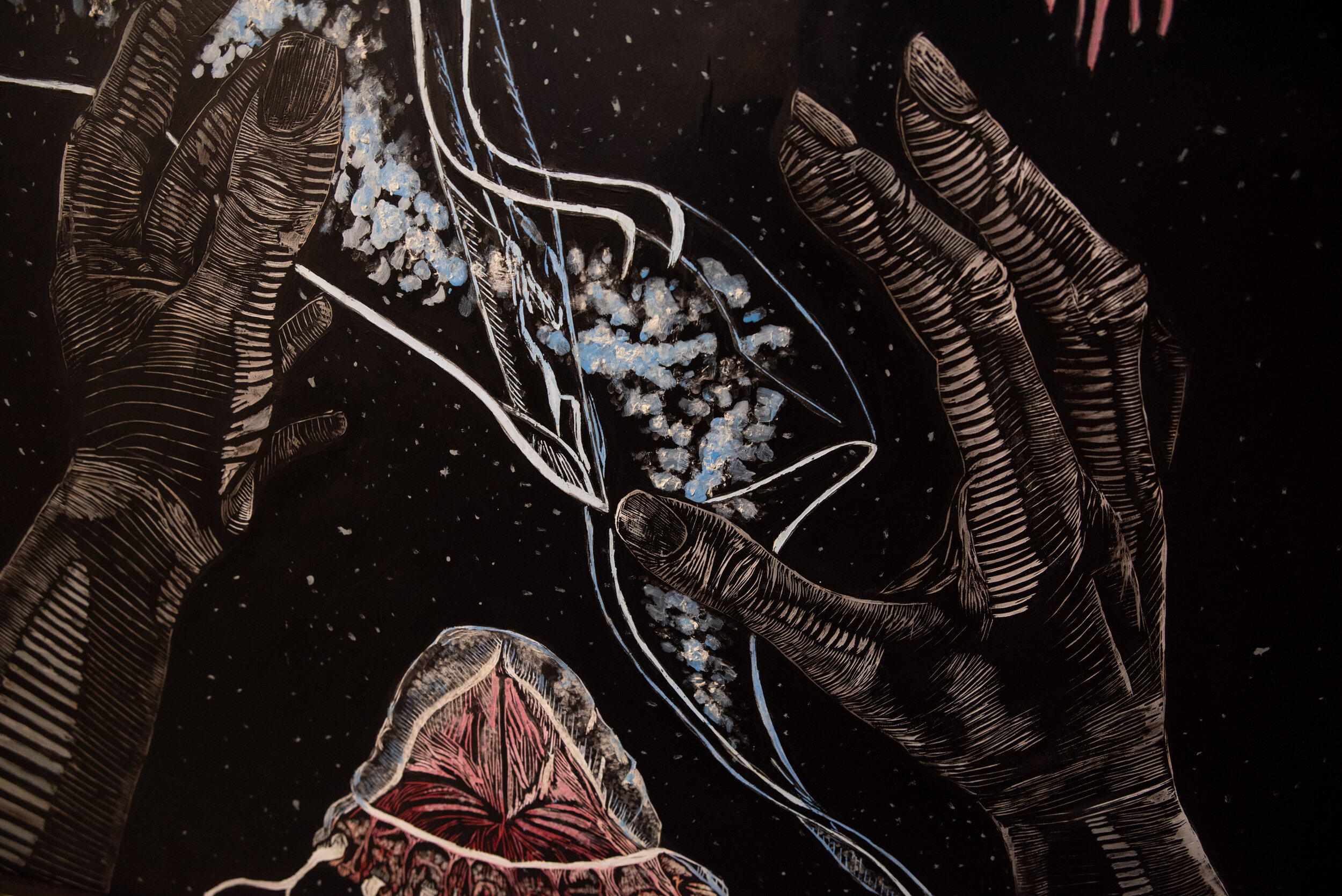
4x4’ painted woodcut
2020
Create a space where you can observe your fears and emotions with curiosity and wonder. What are your fears and emotions trying to tell you?
Detail of hands with a Venus Girdle, a bioluminescent comb jelly. This comb jelly has also been painted with phosphorescent paint to glow in the dark

4x4’ painted woodcut
2020
Detail of woodcut fingers

4x4’ painted woodcut
2020
This panel descends to Bathypelagic depths 3300ft- 13100ft , sinking deeper into self discovery.
Detail of a vampire squid.
Vampyroteuthis infernalis ( meaning vampire squid from hell) is the only squid of it’s genus and exhibits qualities of both an octopus and a squid. It gives off bioluminescence on the tips of its legs.

4x4’ painted woodcut
2020
This panel descends to Bathypelagic depths 3300ft- 13100ft , sinking deeper into self discovery.
Detail of a firework jellyfish Halitrephus maasi. Very little is known about this species of jellyfish but it has been recorded at depths of 4000-5000ft
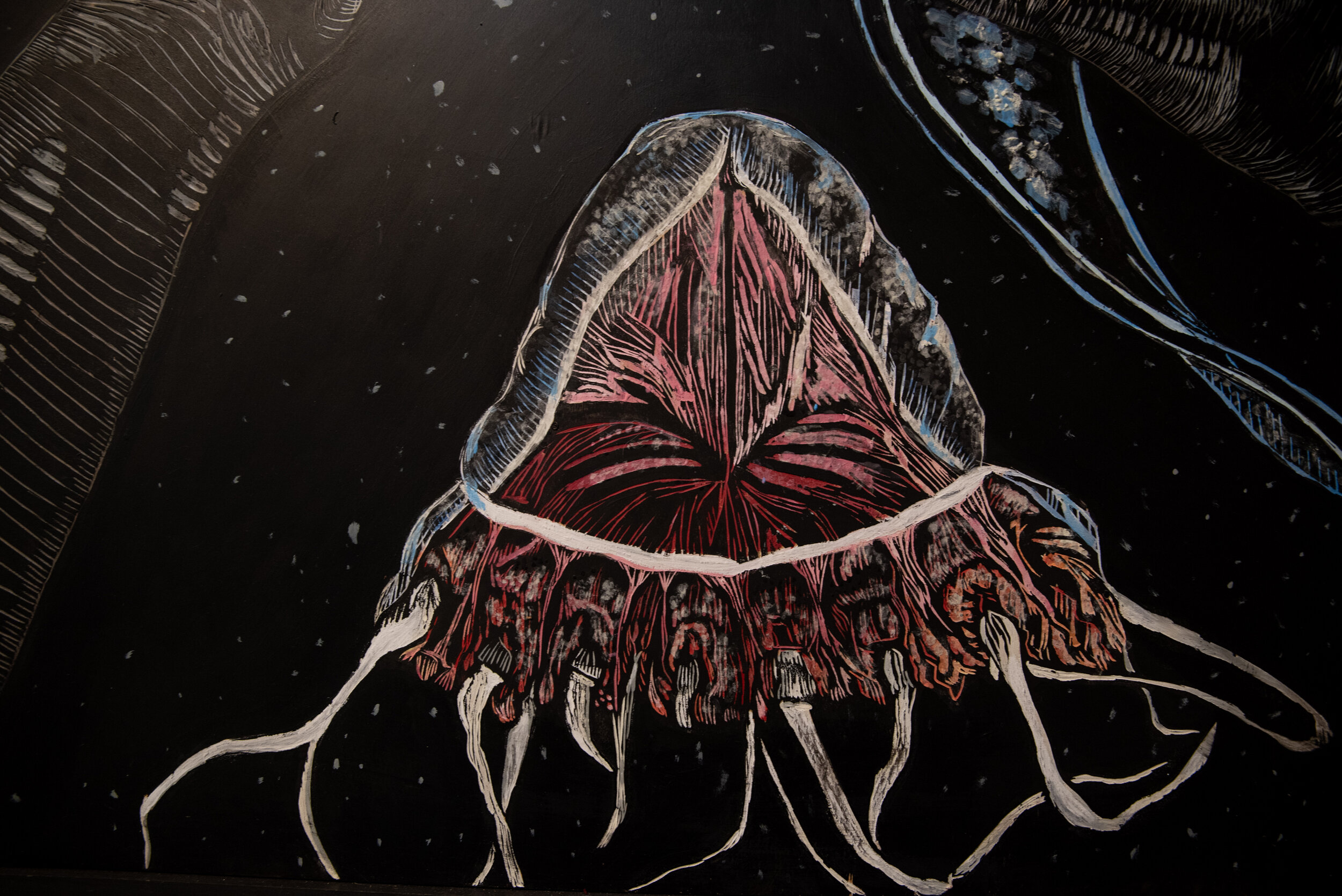
4x4’ painted woodcut
2020
This panel descends to Bathypelagic depths 3300ft- 13100ft , sinking deeper into self discovery.
Detail of a helmet jellyfish Periphylla periphylla.
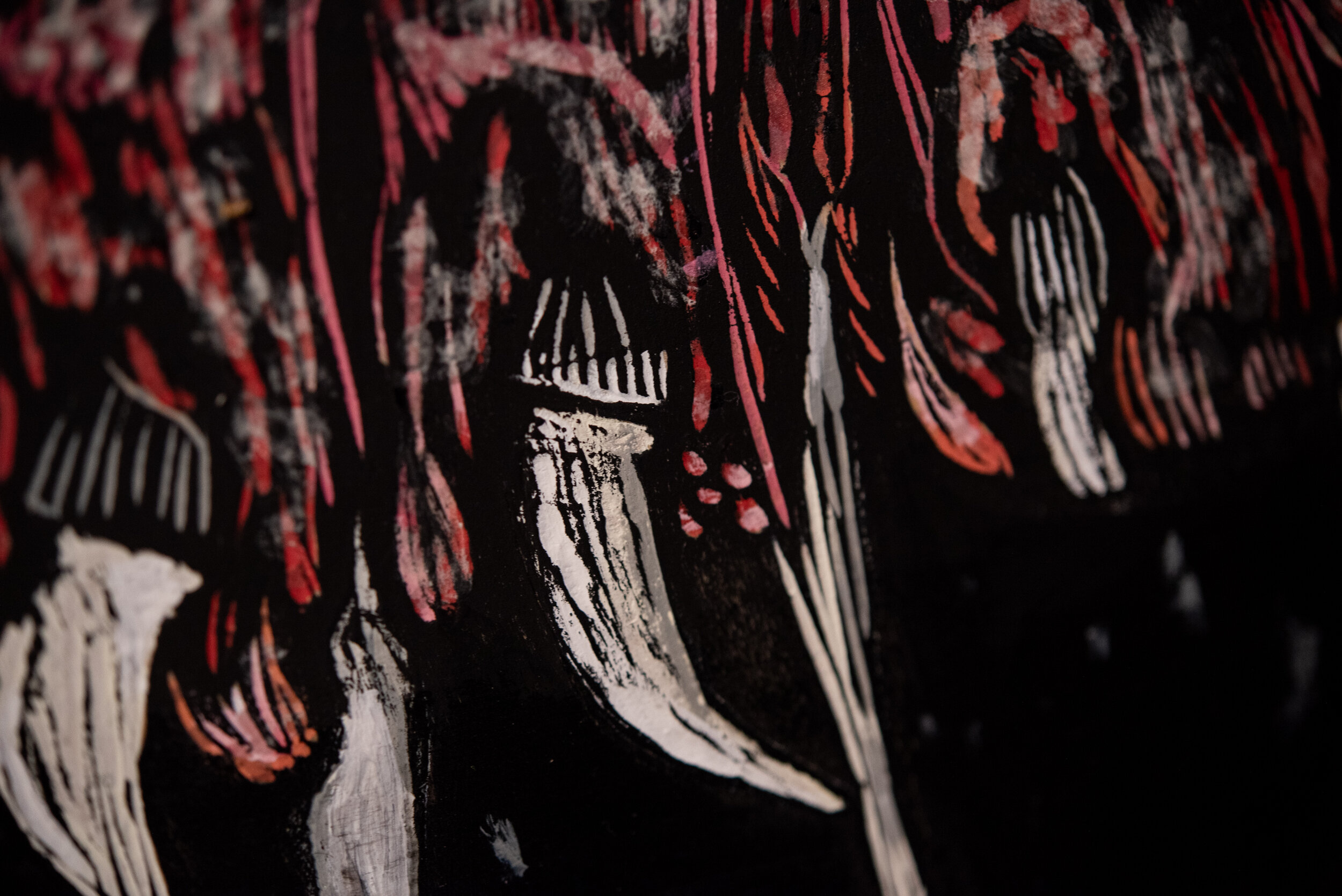
4x4’ painted woodcut
2020
This panel descends to Bathypelagic depths 3300ft- 13100ft , sinking deeper into self discovery.
Closer Detail of a helmet jellyfish Periphylla periphylla. This is one of the few types of jellyfish that do not go through a polyp stage but release eggs into the water that develop directly into jellyfish. This species has been found as deep as 23000ft
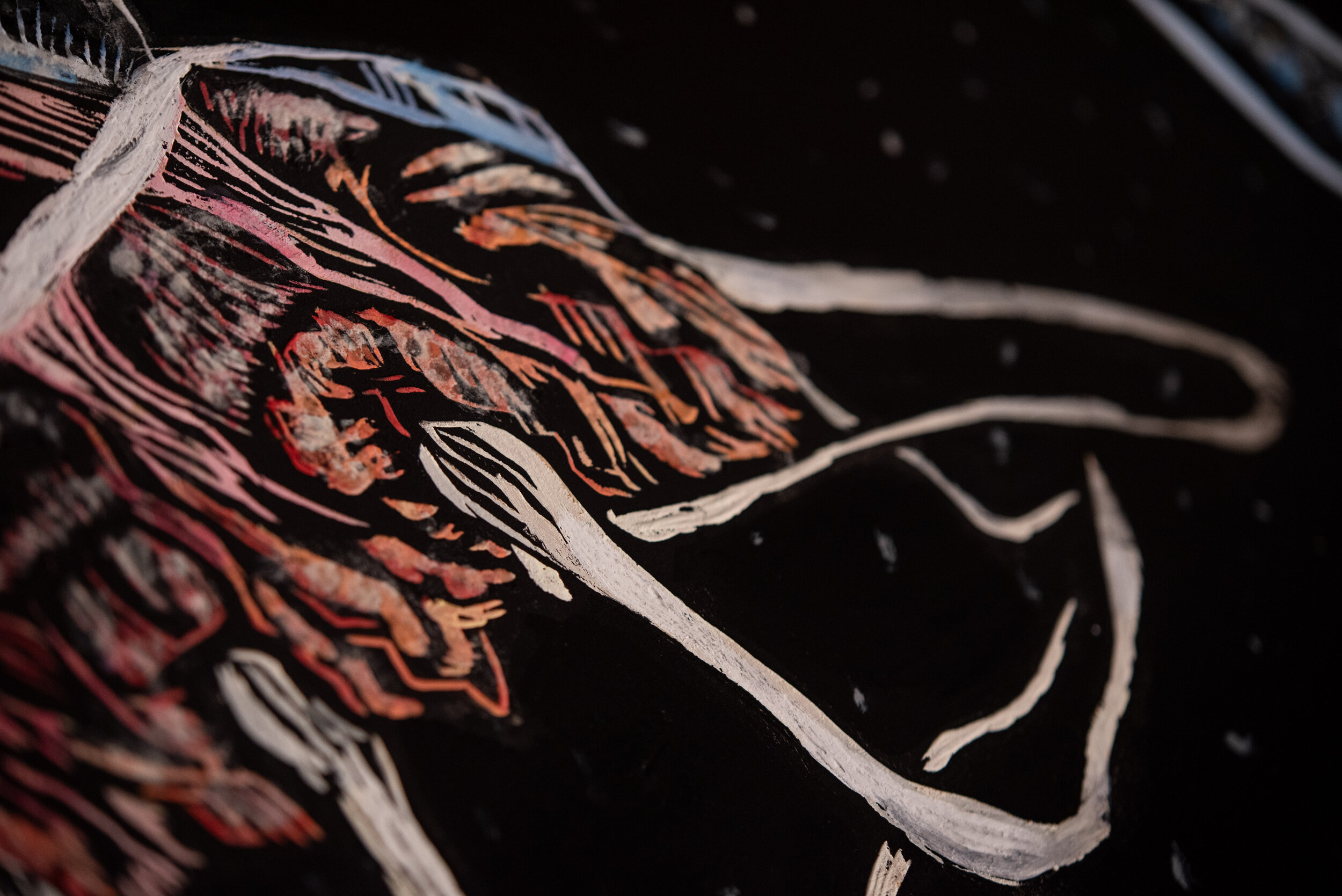
4x4’ painted woodcut
2020
This panel descends to Bathypelagic depths 3300ft- 13100ft , sinking deeper into self discovery.
Detail of a helmet jellyfish Periphylla periphylla. This jellyfish also leaves the depths to feed on zooplankton at night and flips over to descend to the depths during the day.
This species also creates bioluminescence. You can view the glow in the dark paint in the bell shape of this jellyfish in the space

4x4’ painted woodcut
2020
Panel 4 in this series. This depicts the critical moment of confronting a fear or emotion. We can finally see how this fear has affected our actions and have a greater understanding of how to move through it.
This panel still depicts Bathypelagic depths 3300ft- 13100ft , yet still sinking deeper into self discovery.
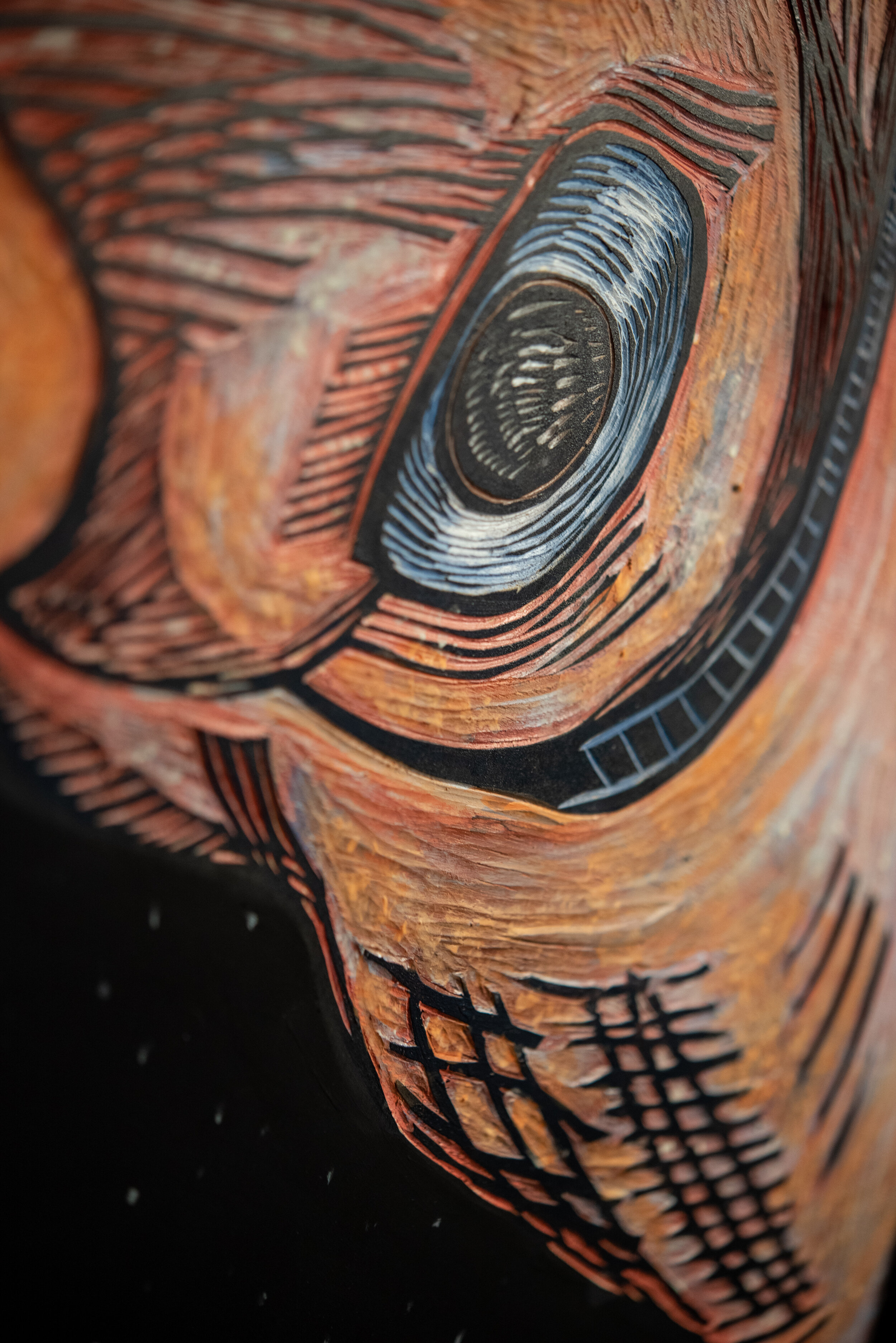
4x4’ painted woodcut
2020
This panel still depicts Bathypelagic depths 3300ft- 13100ft , yet still sinking deeper into self discovery.
This is a detail of the largest eye in the animal kingdom, the giant squid. Their eyes are the size of soccer balls to be able to track prey in the depths
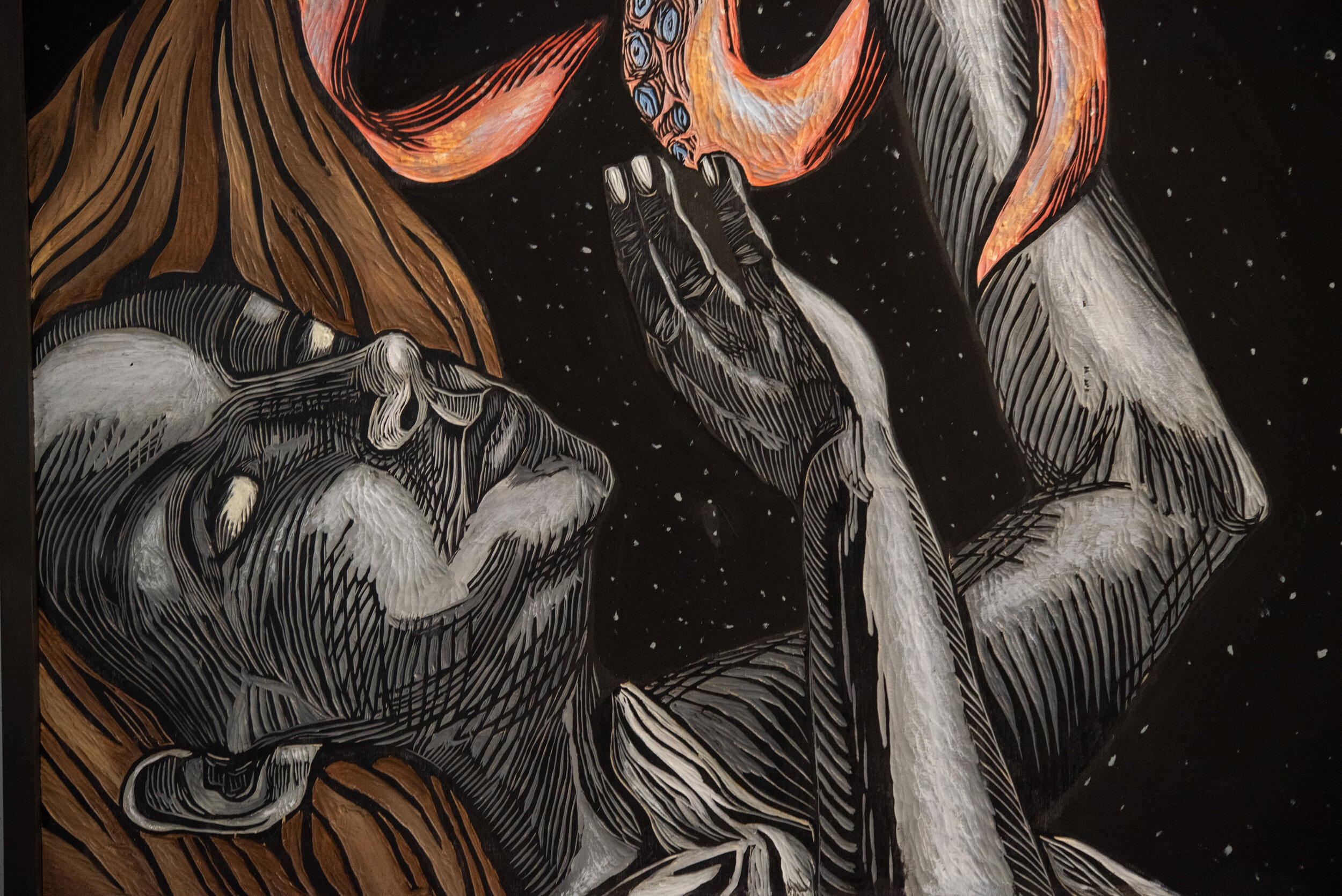
4x4’ painted woodcut
2020
This panel still depicts Bathypelagic depths 3300ft- 13100ft , yet still sinking deeper into self discovery.
Is this confrontation positive or negative?
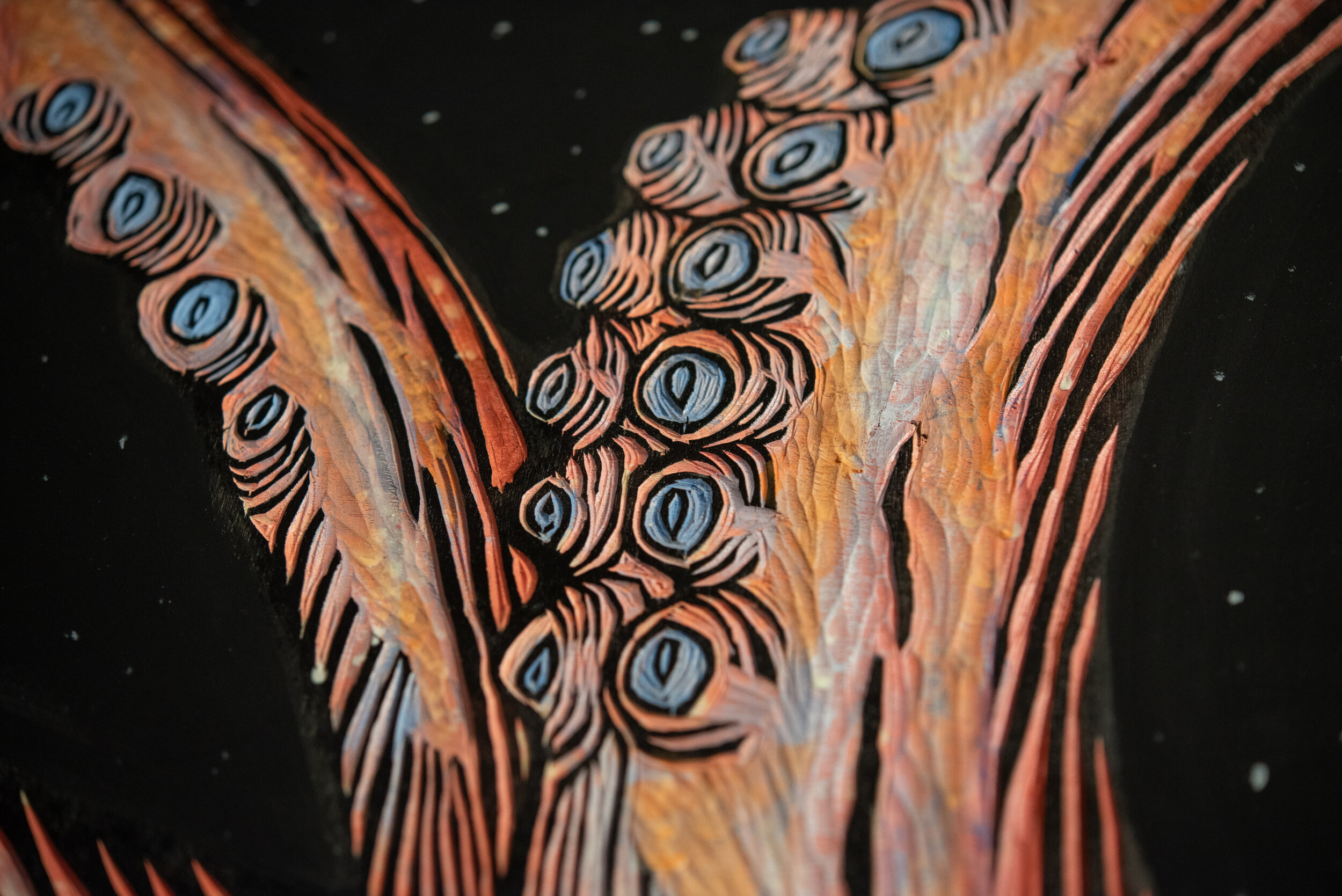
4x4’ painted woodcut
2020
This panel still depicts Bathypelagic depths 3300ft- 13100ft , yet still sinking deeper into self discovery.
This is a detail of the arms of a giant squid Architeuthis Dux, the most illusive, yet one of the most feared creatures of the sea. It is believed that the myths of the kraken stem from sightings of these large squid. They reach lengths of up to 43 ft for females 33ft for males.

4x4’ painted woodcut
2020
This panel still depicts Bathypelagic depths 3300ft- 13100ft , yet still sinking deeper into self discovery.
This is the first panel in which the figure’s eyes are wide open.

4x4’ painted woodcut
2020
This panel still depicts Bathypelagic depths 3300ft- 13100ft , yet still sinking deeper into self discovery.
What would you do if you encountered a giant squid face to face?
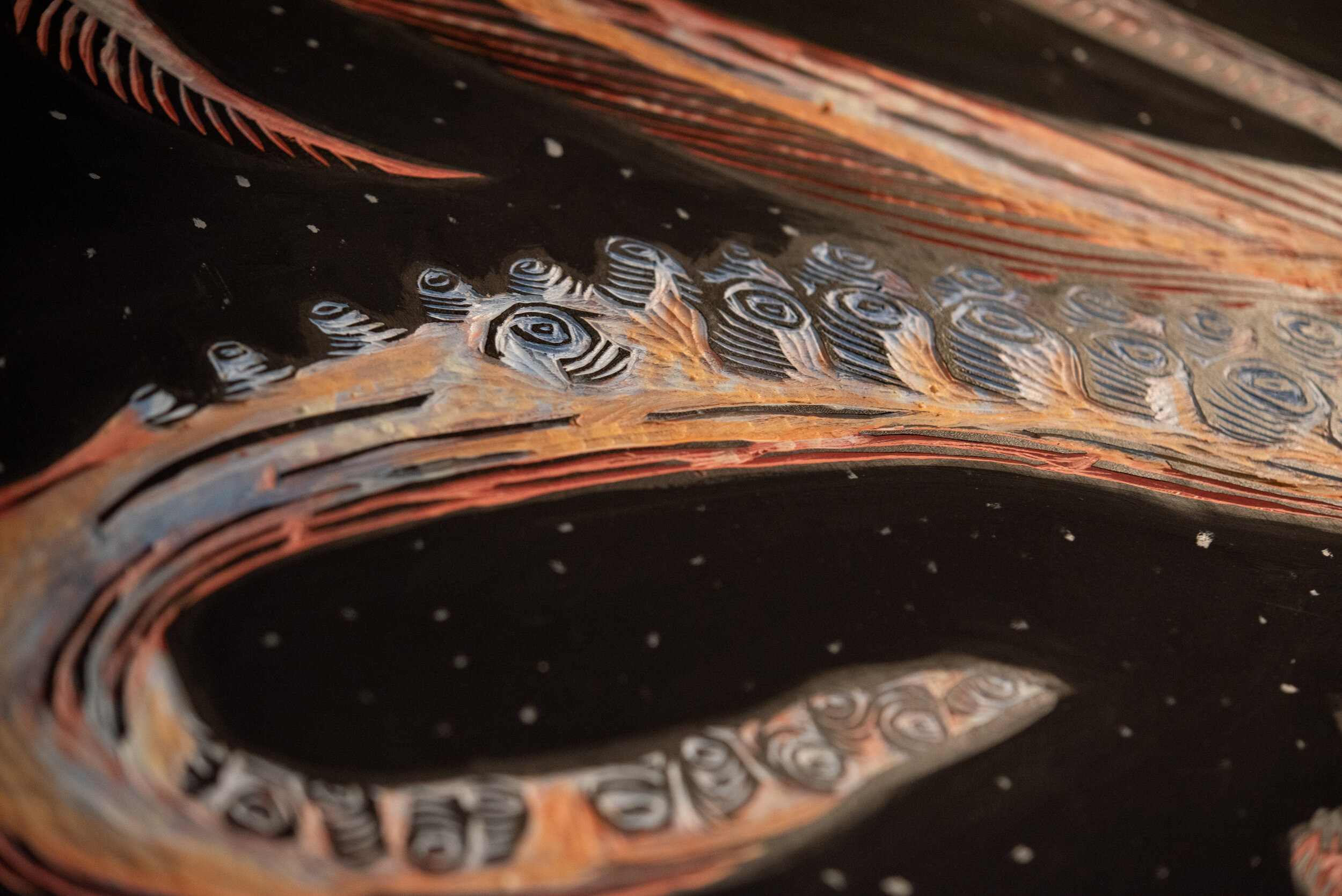
4x4’ painted woodcut
2020
This panel still depicts Bathypelagic depths 3300ft- 13100ft , yet still sinking deeper into self discovery.
This is a detail of the arms of a giant squid Architeuthis Dux. Up until a few years ago there wasn’t even video footage of a giant squid in the wild, we had only studied specimens that had washed up on shores.

6x7’ painting on unstretched canvas
Praya Dubia are siphonophores or colonial organisms made up of individual organisms called zooids. Each of these organisms has a function, with each other they would die. They are one of the longest creatures in the ocean reaching lengths of up to 160ft long.
This colonial organism is also bioluminescent and is painting with phosphorescent paint to illustrate that.
As this is a colonial organism this 2 panel painting is apart of the exhibition so that people can attach their fears to it so we can all share the load together.
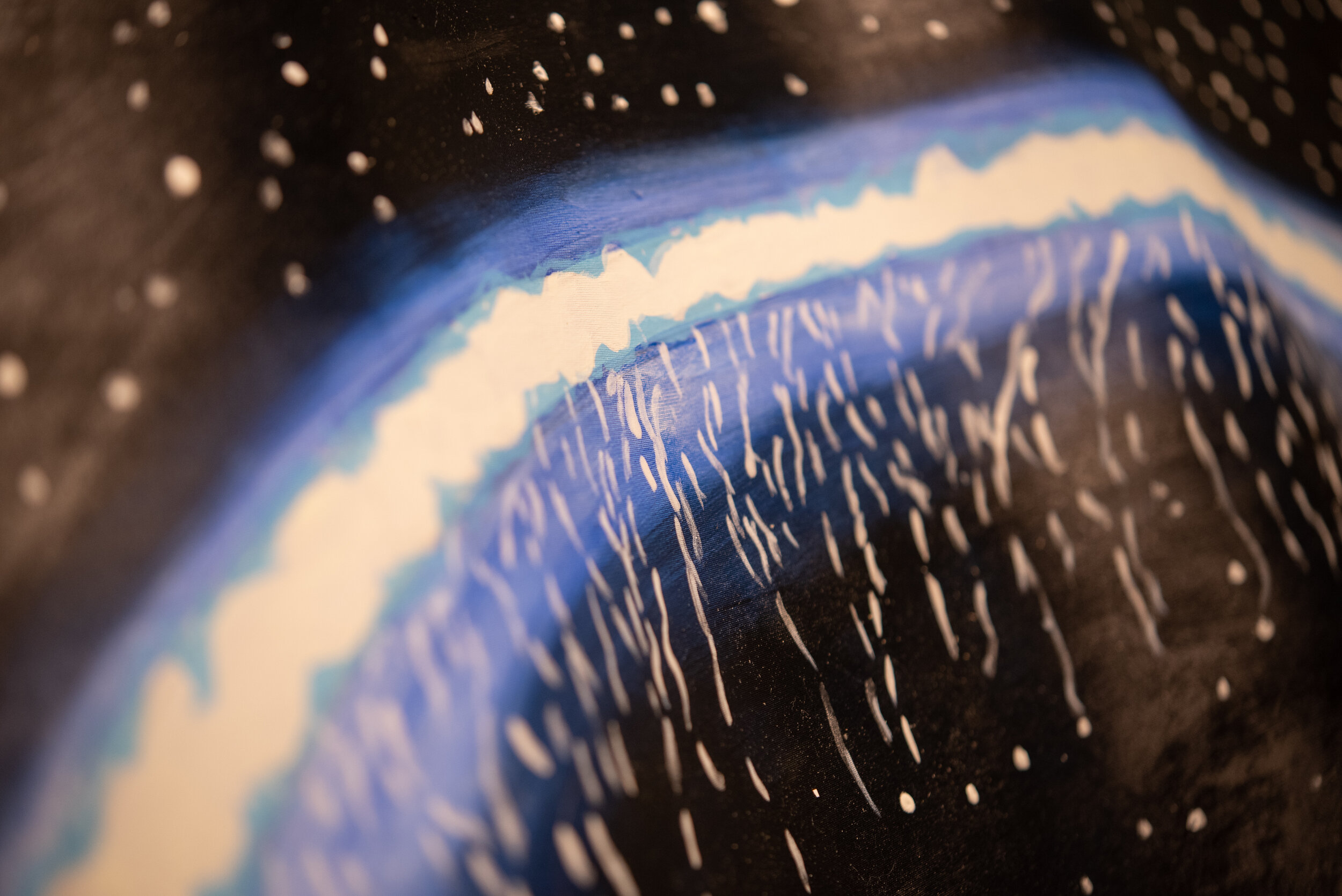
6x7’ painting on unstretched canvas
Praya Dubia are siphonophores or colonial organisms made up of individual organisms called zooids. Each of these organisms has a function, with each other they would die. They are one of the longest creatures in the ocean reaching lengths of up to 160ft long.
This colonial organism is also bioluminescent and is painting with phosphorescent paint to illustrate that.
As this is a colonial organism this 2 panel painting is apart of the exhibition so that people can attach their fears to it so we can all share the load together.

6x7’ painting on unstretched canvas
Praya Dubia are siphonophores or colonial organisms made up of individual organisms called zooids. Each of these organisms has a function, with each other they would die. They are one of the longest creatures in the ocean reaching lengths of up to 160ft long.
This colonial organism is also bioluminescent and is painting with phosphorescent paint to illustrate that.
As this is a colonial organism this 2 panel painting is apart of the exhibition so that people can attach their fears to it so we can all share the load together.
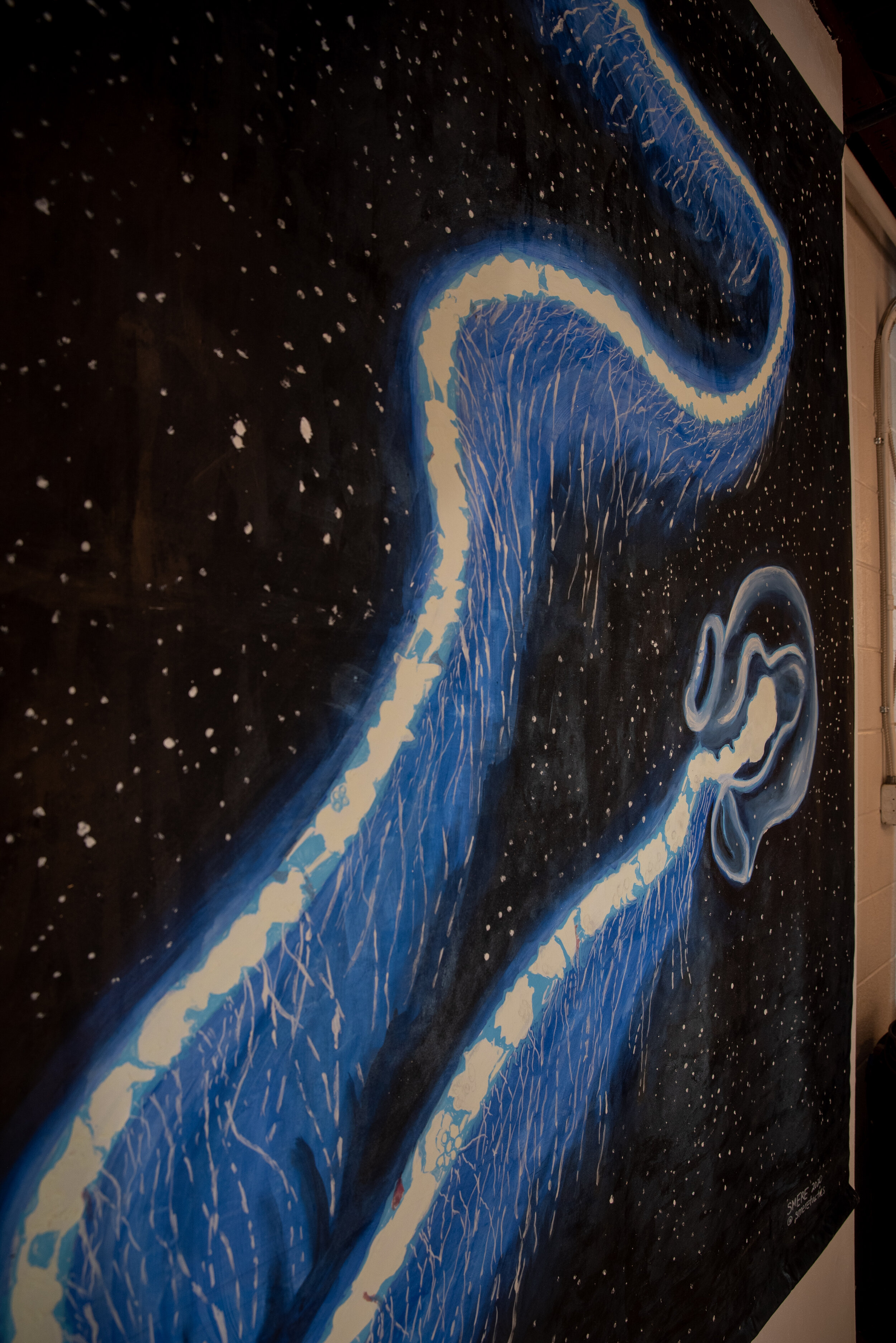
6x7’ painting on unstretched canvas
Praya Dubia are siphonophores or colonial organisms made up of individual organisms called zooids. Each of these organisms has a function, with each other they would die. They are one of the longest creatures in the ocean reaching lengths of up to 160ft long. The bell of this organism is responsible for locomotion.
This colonial organism is also bioluminescent and is painting with phosphorescent paint to illustrate that.
As this is a colonial organism this 2 panel painting is apart of the exhibition so that people can attach their fears to it so we can all share the load together.
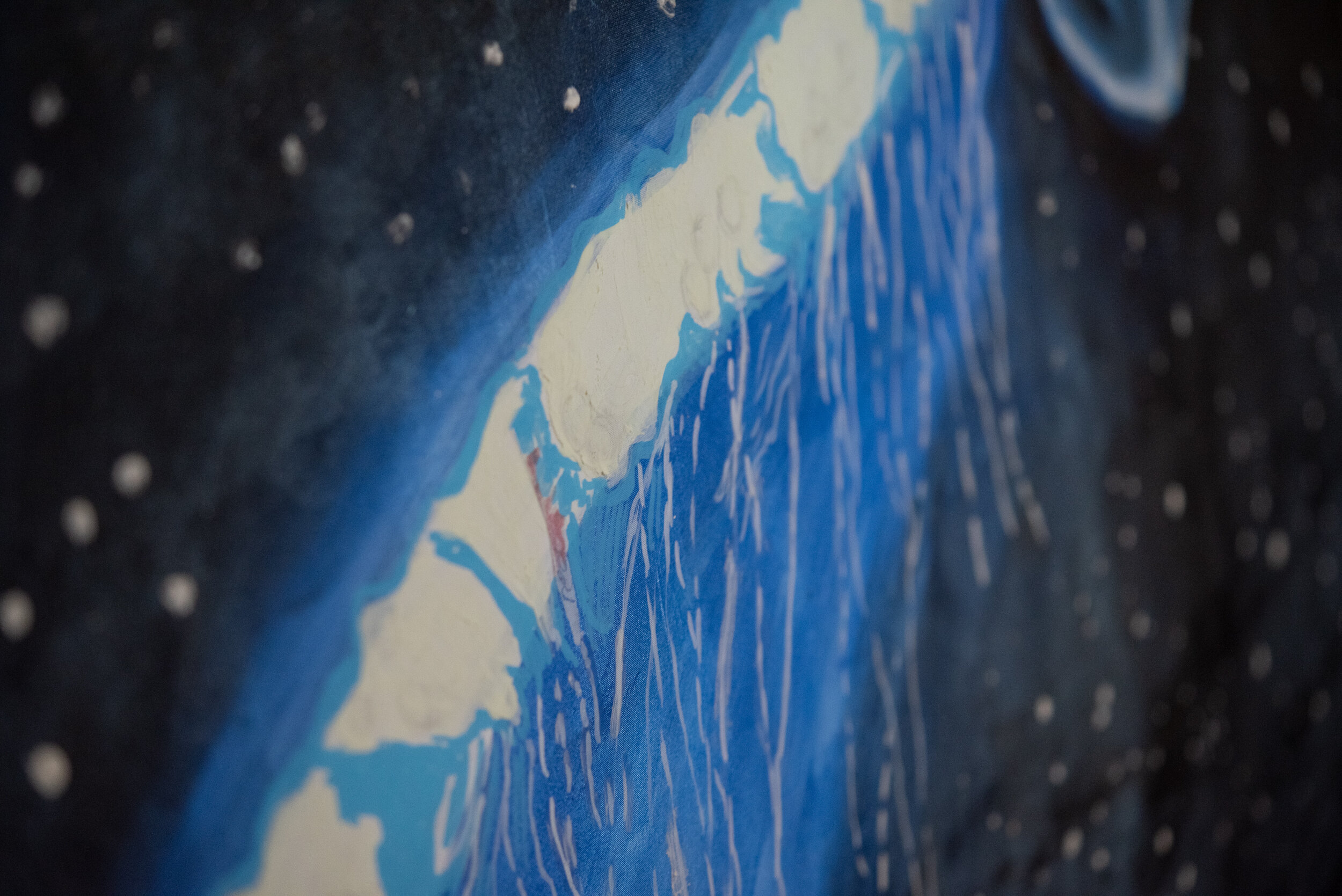
6x7’ painting on unstretched canvas
Praya Dubia are siphonophores or colonial organisms made up of individual organisms called zooids. Each of these organisms has a function, with each other they would die. They are one of the longest creatures in the ocean reaching lengths of up to 160ft long.
This colonial organism is also bioluminescent and is painting with phosphorescent paint to illustrate that.
As this is a colonial organism this 2 panel painting is apart of the exhibition so that people can attach their fears to it so we can all share the load together.

































Zine Exploring Fear
A collaboration between Amanda Mesi McGuire and Sara Meredith
Zines are available for free. If you’d like a printed copy or a few copies for your organization please send me an email to make arrangements.
If you’d like to be involved with the Community art piece about collective fear, you can share you answers to the prompts in this zine with us at Bit.ly/sharefear (also a link on the last zine page) Answers will be anonymous if you choose.
Video experience
Created by Heidi E Johnson of Blue Umbrella Arts
